Testing & Benchmarking the HP Reverb G2 vs. the HP G1 and HTC Vive Pro
BTR has been reviewing and benchmarking VR games and hardware since 2016 when we started out with a Rift CV1 and then upgraded to a Vive Pro two years later. Three weeks ago, we received a Reverb G2 on loan from Hewlett Packard (HP). Coincidentally, we received a Reverb G1 from Sean, BTR’s VR sim specialist, that same day. Although the Reverb G2’s specifications are similar to the G1’s – 2160 x 2160 resolution per eye – HP claims that the new G2 is a major upgrade. Since the Reverb G2 and the Vive Pro each represent competing VR platforms, we will evaluate and compare them with a strong emphasis on benchmarking their performance in VR games.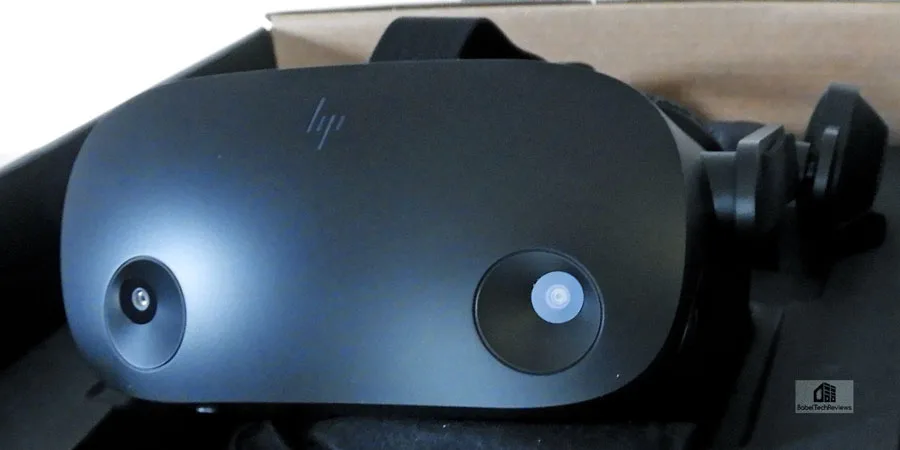
A lot has changed since our original review when we wrote that the main reason we picked the Rift over the Vive is because we are mobility-limited. Six years ago, the Oculus Rift offered great “seated” experiences while Vive featured more precise-tracking for large standing “room-sized” experiences. Since then, most SteamVR games allow for awesome seated experiences, and we said good-bye to the Rift for the much more immersive gaming of the higher resolution Vive Pro and its untethered wireless experience.
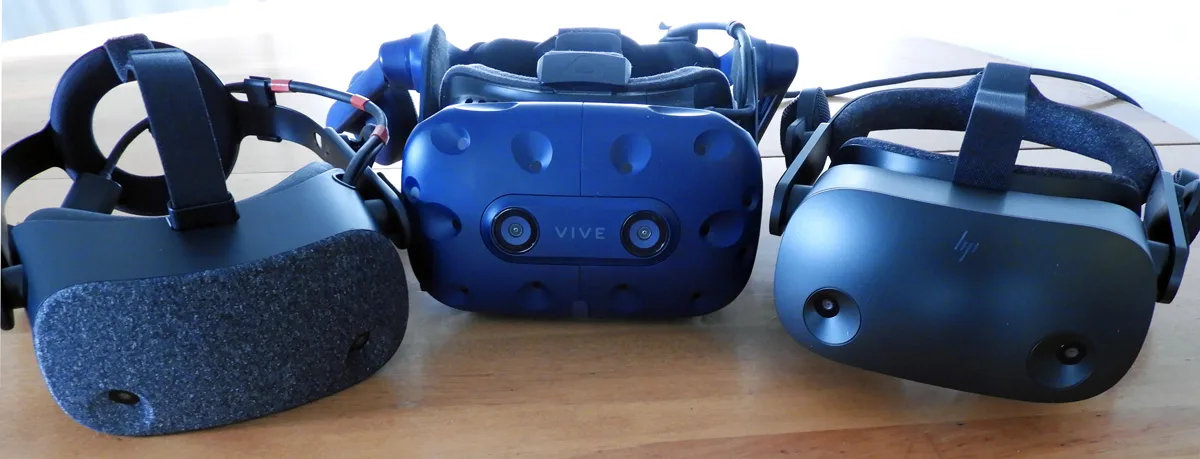
The Vive Pro at 1440×1600 per eye resolution, although it is a noticeable upgrade over the Rift CV1’s 1080×1200 per eye resolution, the “screendoor” effect (the unlighted space between pixels) is still visible, and we were intrigued by the claims that the Reverb has eliminated it by using improved lenses and and and an LCD display at 2160×2160 resolution per eye. Also, Sean told us that the Reverb is the perfect headset for flight and racing sims, and we just had to try it. We now have three headsets that we are comparing for this review – the Pro, the G1, and the G2.

The Reverb G2 at $599 and the Vive Pro are still competitors, but the Vive Pro is only available from Vive in Europe. The Pro headset by itself, it costs around $799. Vive has replaced the Pro with the Pro Eye and it is aimed mostly at developers and for professional use, but it still requires two base stations ($199 each) and two controllers ($199 each) making the full kit considerably more expensive than the complete Reverb G2 kit. The Vive Cosmo is Vive’s current consumer platform.
The State of VR Today
Since 2016, BTR has continued to focus on VR, and not only do we review selected VR games, we benchmark and chart their frametimes and unconstrained framerates (the performance headroom) with multiple video cards from AMD and NVIDIA using FCAT-VR.
From the very beginning, we realized that VR is the future, but also that mass adoption is still years off, unlike the ridiculous predictions the tech press were making as they endlessly hyped VR as the next big thing after the 3DTV fad faded. When it didn’t happen immediately, disappointment that it didn’t meet their own overblown unrealistic expectations caused many of them to bitterly state that VR will never be more than niche, while others are even saying it is dead. Well, this is nonsense as the latest VR reports show.
Valve’s exclusively VR game, Half Life: Alyx, has sold over 2 million copies, and recently Facebook’s CEO said VR will become mainstream as his company pours unlimited resources into VR. He did not specify what mainstream means, but the understanding is that if 10 million users are on one platform, it becomes very profitable to develop for. And we have seen a very steady progression of improving VR games and HMD development. VR is still in its infancy and we have not yet seen the true Next Gen of HMD 2.0 which are probably being developed this year.
However, with the advent of NVIDIA’s ray tracing and AI DLSS upscaling for the desktop and the industry-wide adoption of ray tracing, a whole new world of photorealistic video gaming opens up to PC gamers, and we have confirmation from NVIDIA that this same technology is being applied to VR. AMD has also confirmed that they will continue to support what they call ‘VR Premium’.
VR and AR are growing incredibly fast in the professional world as a multi-billion dollar industry – air and space travel, automotive, healthcare, training and education, as well as designers have adopted VR as essential to their growth, besides entertainment. VR will not stop growing even though VR is still somewhat niche in the gaming world. Weak arguments against VR include that it is difficult to set up; that VR is not physically comfortable, it is isolating, and expensive – or even that it makes the player feel too “small” in a big game world. Perhaps some of this was true 5 years ago, but no longer.
Most VR games can be played seated, and safeguards are in place to insure users’ comfort. That VR is more isolating than PC gaming is a ridiculous idea as it also offers the same kind of online interaction for gamers, and several HMDs allow VR enthusiasts to monitor what is going on in the real world while inside VR. It is also much less expensive to get into PC VR now than ever before.
The VR experience is different compared with regular video gaming, and the intense feeling of “being there” in an immersive and realistic world simply cannot be conveyed by words or by video. It actually takes entering and interacting within a well-done VR game to make believers out of skeptics. Until recently, few enthusiasts could afford to recreate an arcade-like VR experience at home which is necessary for truly immersive racing and/or flying sims.
In 2016, after the first time this editor stepped into a VR world and crawled under a desk to examine its underside, met a huge dragon face-to-face, stared down into an abyss, and felt the wind while racing in the Indy 500, we became certain that VR will become a significant part of the future of gaming. Watching a full-size Skyrim dragon blasting out fire, or launching fireballs and spells from your own fingertips, or actually feeling the handheld controller thunk as an arrow partially penetrates the shield you are holding for defense, imparts an impressive and immersive realism that conveys the feeling of being “inside” the game. In contrast, pancake games cannot provide more than a window into a game world no matter how large the screen.
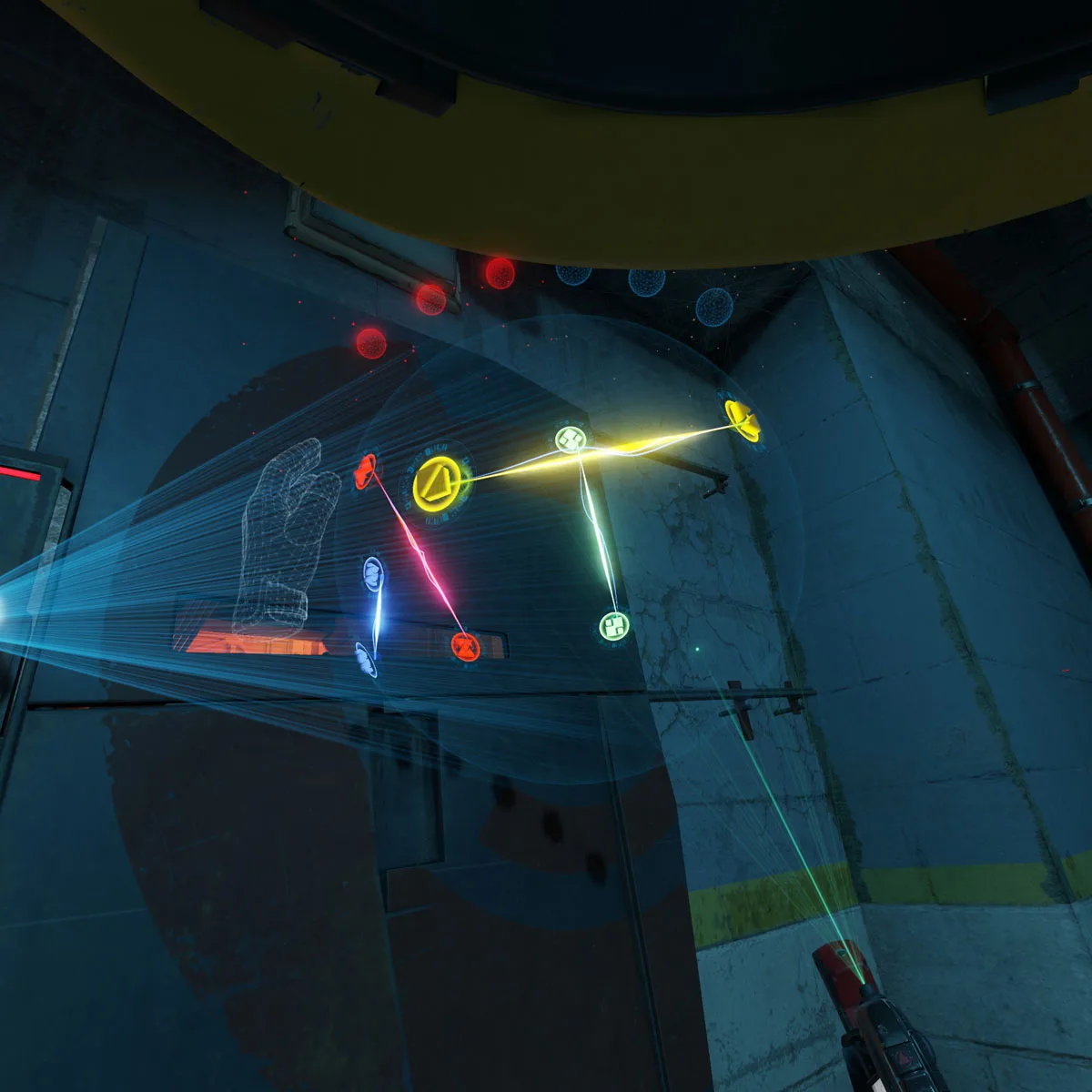
We do not suggest that VR is superior to pancake gaming or will replace it. Rather VR is an alternate way to game that is not inferior in any way. VR is not a replacement for gaming on a flat screen – it is a different way to enjoy it. We would much rather play a high-quality video game on a flat screen display rather than play a poorly-implemented VR game.
Since its beginning, VR enthusiasts have demonstrated it to their friends, posted enthusiastically on social media, and purchased all of the good games on Day 1 to “encourage” VR development. VR gaming has continued to grow at a slow and steady pace as the tech press continued to lambaste it because of their inability to comprehend what was happening after their ridiculous predictions of instant adoption failed.
Then the 2020 COVID-19 pandemic changed everything. VR has become a social media phenomenon and its growth has continued to spread by word of mouth and even the mainstream press has begun to acknowledge it. Gone are the early days of rushed and poorly thought-out VR games, and high-quality full length AAA games have been released and are continuing to be announced. At least 60 games available for the Oculus Quest platform have made over $1 million each in 2020 according to Facebook. Six of these games have raked in above $10 million, and the top Quest game earned above $29 million. And the latest Steam survey acknowledges that HMDs are now at 2% adoption.
So now let’s take a closer look at the Reverb G2 which launched in November 2020 and its evolution from the G1 which launched in March 2019.
We asked HP, ‘Why the G2 over the G1’
We asked HP about the differences between the G1 and the G2. They replied (and we quote):
G2 is a massive upgrade over G1, given how big of an improvement it is at the same price we no longer sell the G1 so ideally they focus on G2. I can guarantee they wont want to use the G1 after trying G2.
Improvements over G1:
-
- New Valve designed lenses
- Mechanical IPD
- Updated WMR optical calibration methods for new lenses
- New LCD panels (brighter, lower persistence, reduced mura, better contrast and colors)
- New controllers with better ergonomics and industry standard button layout
- Longer and thinner cable, now 6 meters long
- New HMD ergonomic design with magnetically removable facemask
- 4 camera WMR tracking, provides vastly superior controller tracking volume for natural inputs
- Off ear BMR driver headphones from the Valve Index
/quote
After spending weeks with the G2 and the G1, we absolutely have to agree. There is no comparison, especially with G2’s superior tracking and its greatly improved clarity over the G1. The Reverb G2 is a much better headset for gaming than the G1.
So let’s get started by unboxing the Reverb G2 on the following page and we will compare it with the G1.
Unboxing
The Reverb G2 arrived in a relatively small black box with an image of the HMD on the top and the HP logo on the front with no other advertising or any details of its features. It is well-designed to take good care of its contents although it is double-boxed for shipping. In contrast, the G1 box is huge with a lot of wasted space inside.
Unlike the Vive Pro that uses the SteamVR platform which arrives with two base stations, the G2 is a WMR headset that uses 4 built-in cameras on the HMD for tracking. The 6 meter cable for connecting the HMD to the PC, the power brick, instructions, DisplayPort to mini-DP adapter, and the two controllers with AA batteries to power them are included.
For comparison, below is the G2 kit’s contents (left) versus the G1 kit (right).
A battery charger is not supplied. But you will definitely want one with high capacity rechargeable AA batteries because it’s too wasteful and expensive to keep buying new ones for either set of Reverb controllers. In contrast, the Vive Pro controllers are rechargeable and come with adapters, not replaceable batteries.
The G1 uses USB 3.0 whereas the G2 uses USB-C. It means you don’t have to use the included power cord brick; instead, you can use the USB-C cable to power the headset as long as your PC connection is capable of delivering 6W.
The G1 and the G2 superficially look the same but there are major difference besides the cloth covering on the G1 and the different head straps. The G2 is very comfortable and an improvement over the G1, but the differences are not huge. It took awhile for us to get used to the G2 comfort differences compared to the Pro which is also a very well-balanced and comfortable HMD although it is heavier than the G2.
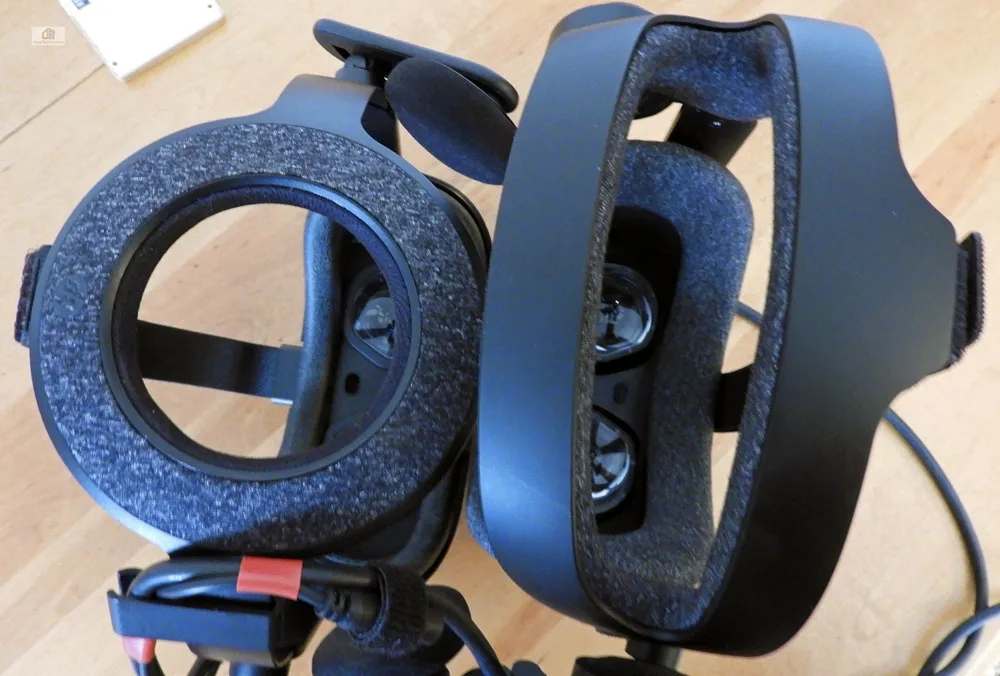
The new design does a excellent job of holding the headset firmly to ones head without undue pressure. The side adjustments for tightening the headset are elastic which makes it easy to remove or to put headset on without needing to adjust it each time.
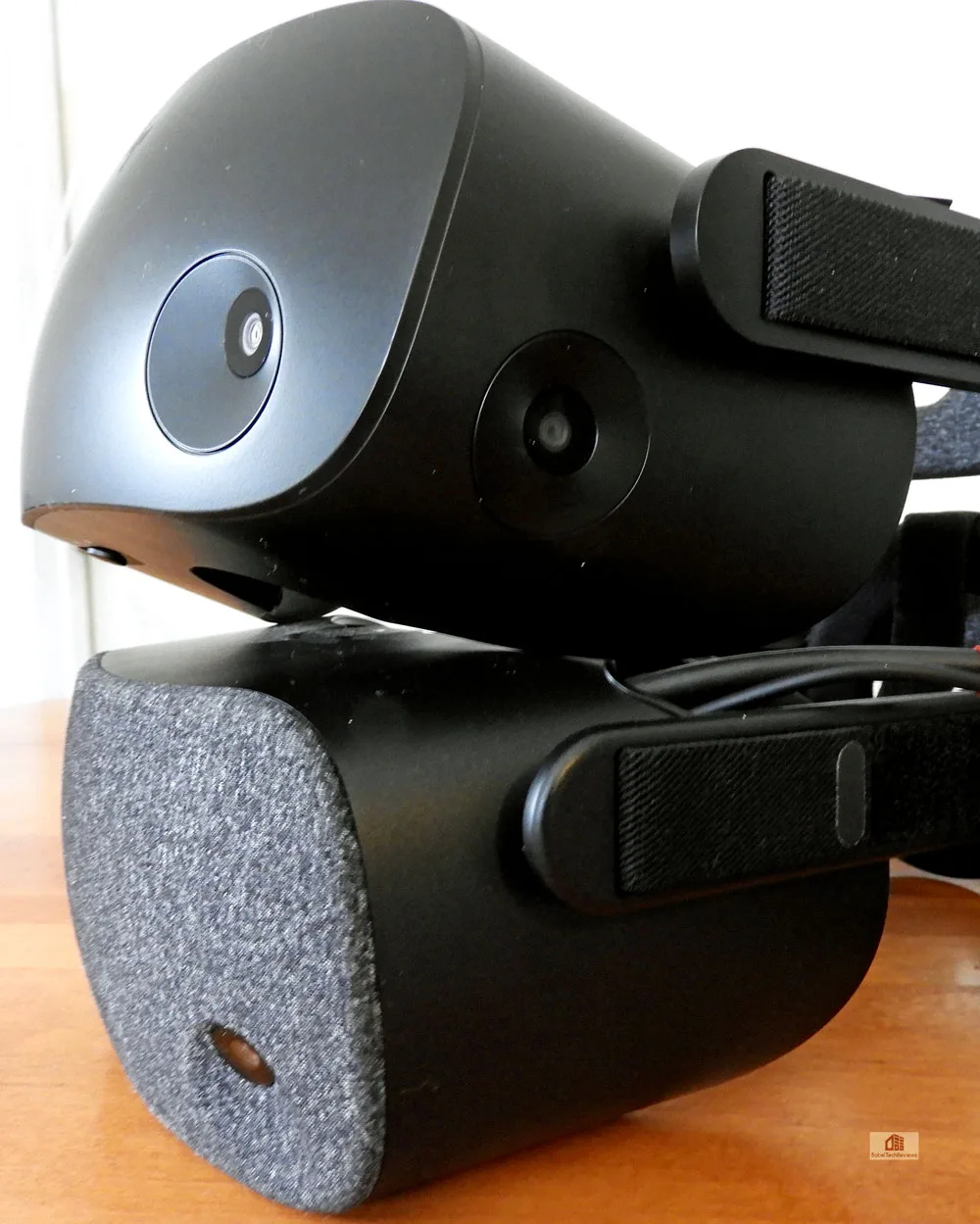
Notice that the G1 only has two cameras on the front whereas the G2 has 4 cameras for better tracking capabilities – two on the front and one on each side. They are both 6 DOF headsets but there is large difference in the way they track and the G2’s tracking is vastly superior.
The G2’s two additional cameras allow better tracking which gives a player more natural motion options while gaming without requiring external sensors or lighthouses. Instead of requiring you to keep your trackers directly in front of you like with the G1, the G2 allows users to move their handheld trackers to either side. However, tracking still isn’t perfect compared with the Vive Pro’s external lighthouse system, and some motions like drawing a bow in Skyrim or tossing ammo over your shoulder in Half Life: Alyx may lose camera tracking of your controllers with immersion breaking visual oddities until you learn to adapt to the blind spots.
The G2’s controllers are already pre-paired with the HMD via Bluetooth right out of the box and it is a very quick setup compared with SteamVR pairing.
Although the lenses look similar and technically have the same 2160×2160 resolution per eye, they are not the same. The G2 lenses were designed by Valve working together with HP, and they have very different characteristics. The G2’s lens distortion compensation requires a much higher SteamVR resolution and a more powerful video card to power it. In contrast, the Vive Pro sports a lower 1440×1600 resolution per eye which is the same as the Valve Index HMD.

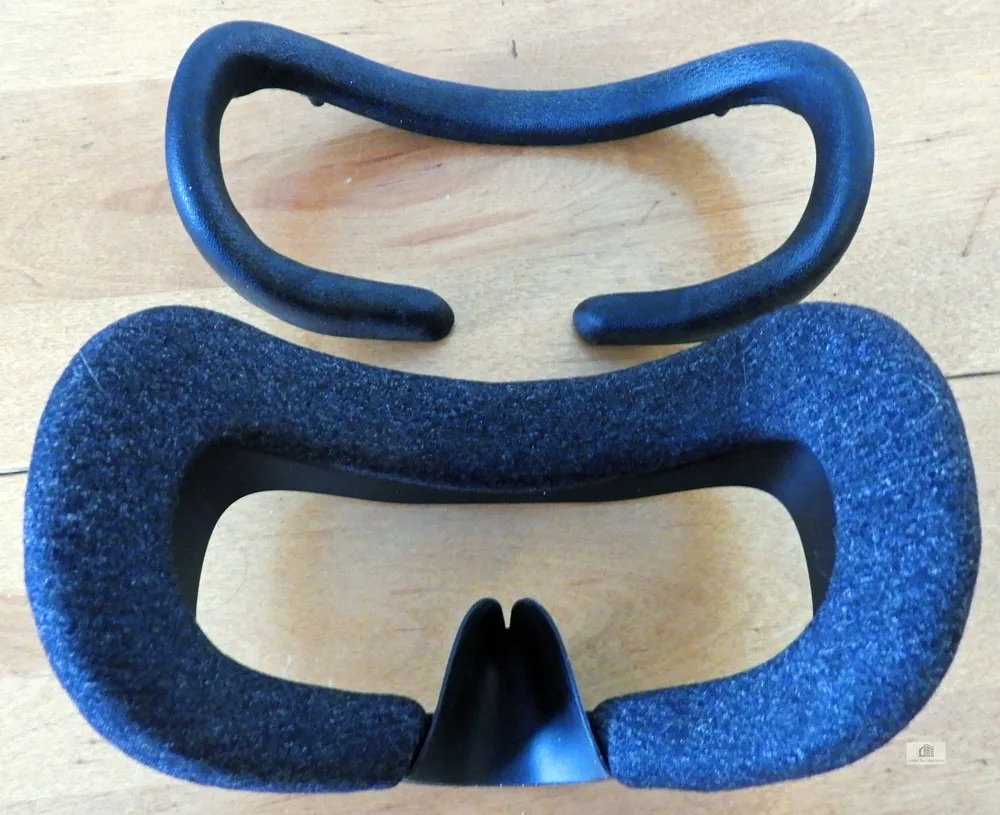
The G2’s faceplate is much thicker and far more comfortable, although for some users it may be too thick. This editor is rather nearsighted and wears glasses, but doesn’t need corrective lenses with either Reverb or with the Vive Pro. The focal distance appears to be similar between the Reverb G2 and the Pro, unlike with the Rift CV1 where corrective lenses are a necessity to see clearly.
Above is what the G2 controller looks like when it is turned on. Compared to the second generation G2 controller, the G1 uses an inferior first generation controller that is neither easy to use nor intuitive. While the G2 controllers don’t fit this editor’s hands as well as the Touch controllers, and they don’t feel quite as solidly built as the Index Knuckles controllers, they are comfortable and the buttons are easy to reach.
Compared to the second generation G2 controller, the G1 uses an inferior first generation controller that is neither easy to use nor intuitive. While the G2 controllers don’t fit this editor’s hands as well as the Touch controllers, and they don’t feel quite as solidly built as the Index Knuckles controllers, they are comfortable and the buttons are easy to reach.

The G1 controller is more like the first generation Vive Wands whereas the G2 has much more in common with the newer and better ergonomic designs of the Index and Touch controllers although the G2 controllers don’t have capacitive sensing.
Although the G2’s positional head tracking is responsive, some rotational latency may be noticed at times, and positional controller tracking jitter is slightly noticeable for shooters that is not visible with the Pro. If you need ultra-high precision you might be bothered by some jitter or mild twitching that may be inherent to WMR tracking. We noted a small deficiency that appeared to be positionally controller related when aiming at distant targets that we don’t see with the Pro using Knuckles controllers.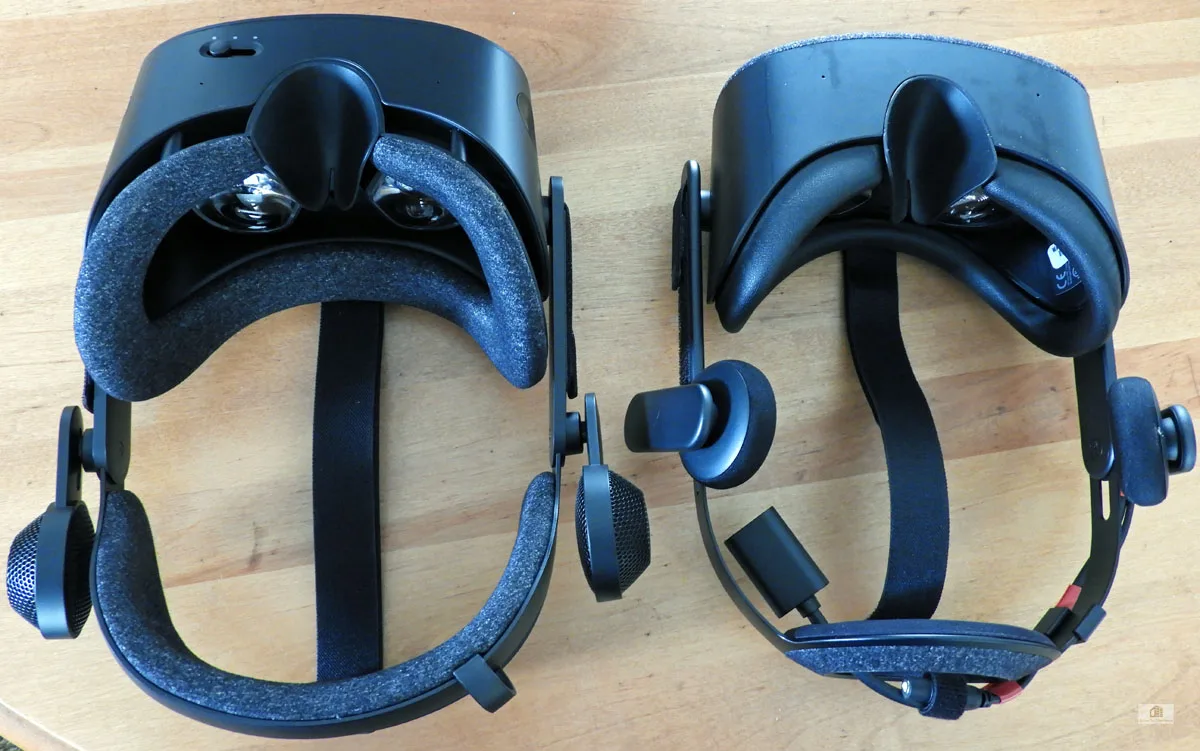
There is no physical IPD adjustments available on the G1 that is available on the G2 (above left) which ranges from 60–68mm. This allows most G2 users to align the HMD lenses with their eyes properly. Unfortunately, moving the slider requires waiting for the software to actually make the adjustment which proved to be annoying and time-consuming
Although the G1 and the G2 both have headphones, the G2’s audio is far superior as it uses the same off ear BMR driver headphones that the Valve Index uses. It is arguably superior to the audio of the Vive Pro which is also positional and very decent. However, we wish we were able to physically adjust the headphones downward to center them over our ears better like we can with the Pro. The G2 also uses dual noise-canceling microphones for good voice quality.
There is a feature that the G2 has that is missing on the Pro that we really like. A pass through camera allows a user to see what is going on in the real world while still in VR. It may be harder for someone to sneak up on you while you are otherwise isolated from the world – or not, depending on how immersed you are in the game.
Next, we set up our G2, so we first disconnected our Pro although they can coexist together easily on the same PC and we set it up.
Set up
The setup for the Vive Pro require installing 2 base stations on opposite side of the room, usually mounted on the wall, for tracking which is much more complex and time-consuming than setting up the self-contained tracking of the Windows Mixed Reality G2.
Simply install the software to set up the hardware, update Windows Mixed Reality from the Windows Update, and connect it to your PC and have your G2’s unboxed hardware together and ready for a physical installation.
First you have to decide how much room you have to devote to VR – you have to clear everything in your play area to avoid damage to yourself or to your property and to set up a guardian system which alerts you if you are getting too close to a wall or object. Or you may eschew the guardian system to choose to choose ‘seated mode’ which requires only enough room to wave your arms about.
Unlike the Pro which needs a few power outlets for the HMD and the base stations, there is only one required for the G2 if you don’t have USB-C; if so, no external power is needed. And you connect the HMD to the video card using the 6 meter cable and its DisplayPort. After installing the provided batteries into the controllers, turn them on and they are automatically paired via Bluetooth.
This following part of the Reverb installation is similar to Vive’s platform as you continue the tutorial inside the HMD and interact and learn how to use your controllers. However, the Pro uses SteamVR (or Viveport) while the G2 is natively WMR and SteamVR.
Although the WMR environment is actually decent and it allows its users customize their space and bring their desktop applications into VR, either controlled by VR controllers or by using a keyboard and mouse much as one would arrange a room, we find it an annoyance and still greatly prefer SteamVR.
WMR actually hijacks your desktop and your have to press a key combo to be able to use it. We wish we could bypass WMR completely. Some users may like it since you can use G2 as a ‘virtual desktop’ for regular desktop productivity, but even with its higher resolution, we find it inferior compared with using the desktop on a flat screen monitor at 1080P. You can adjust the size of the virtual desktop to be larger, but then it takes up too much of the field of view. Perhaps when true 4K panels are available, this feature may come into its own – but we will believe it when we see it.
We found that overall, the Pro setup takes takes significantly longer than setting up the G2. Just like with Viveport and SteamVR platforms, the G2 automatically updates itself and its applications are kept up to date by Windows updates for Mixed Reality.
Let’s head for our next page to get an idea of the Reverb G2 experience and a comparison with the Vive Pro
The G2 Experience
Over the past 3 weeks, we have formed impressions of the similarities and differences between the G1, the G2 and versus the Pro. The G2 has the same 2160 x 2160 resolution for each eye as the G1, but it uses a LCD panel that was designed by Valve. The new panels offer higher contrast and brightness than the G1 while also reducing pixel persistence and the Mura effect. Mura is the result of inadequate consistency in brightness and color consistency from one pixel to the next which has a similar effect as looking through foggy glasses. The G2’s LCD panel improvements allow for better looking text and overall clarity than the G1 provides.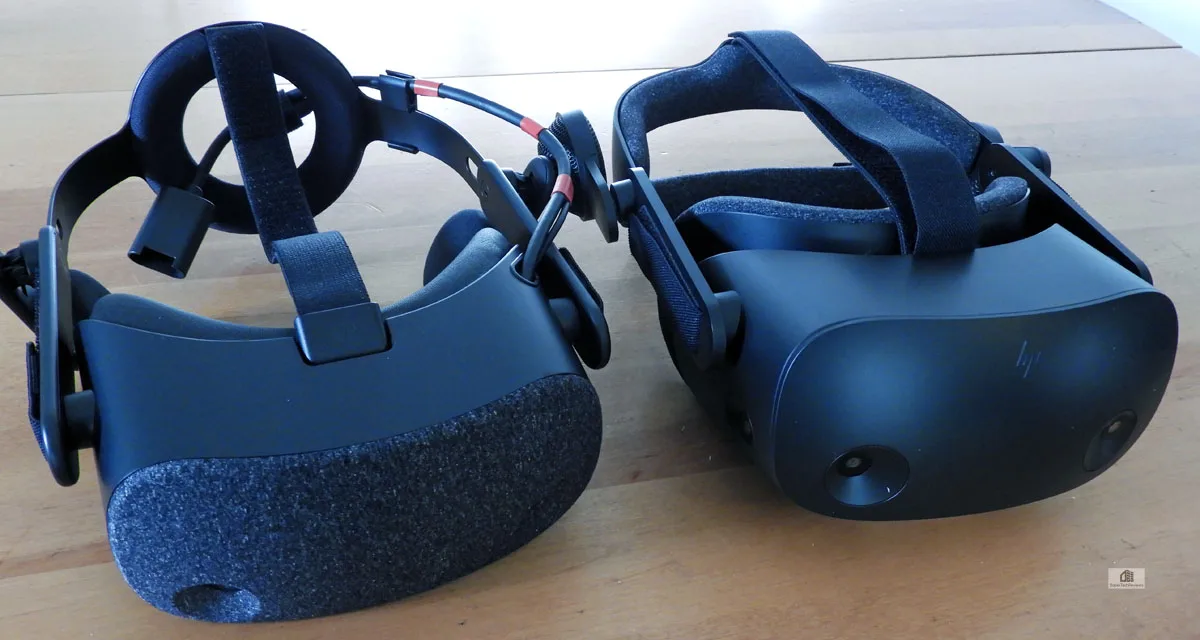
The G2 text is significantly clearer and easy to read using the G2 over the Pro mostly by virtue of its higher resolution. The G2’s higher resolution makes a real difference to overall clarity, and the screendoor effect is mostly gone. On the other hand, god rays emanating from high contrast elements are present in this HMD just as with all others that use Fresnel lenses. It is about the same as the Pro. The field of view although technically at 114% appears the same as the Pro’s 110 degrees.
A gamer cannot increase the pixel density nor use as much SuperSampling with the G2 compared with the Pro because of video card limitations. In other words, you will run out of performance headroom with the G2 much more quickly than with the Pro because of the G2’s higher resolution. By comparing the native higher resolution of the G2 scenes with SuperSampled Pro scenes, we much prefer the higher resolution of the G2.
Comparing simple shooter-type games created for VR, the higher resolution of the G2 over the Vive Pro doesn’t make too much difference – especially since the Pro can use SuperSampling with less demands on the video card. However, games with a lot of detail or text; or even old games like Skyrim VR – especially when you are looking off into the distance – the G2’s increased resolution makes a big improvement to realism and immersion. It is almost as if a fog lifts by playing with the G2 over playing with the Pro that we don’t see with the G1 because of its inferior lenses.
We found the visual “sweet spot” for the G2 is about the same as the Pro’s for us, and better than the G1’s. The only advantage that the Pro has is for its deeper blacks by virtue of its OLED display, but we didn’t have any issues with playing games like Elite Dangerous and Star Wars: Squadrons where the deep black of space is required. Overall, the image quality of the G2 is better than the Vive Pro or the G1, and wearing the G2 is the most comfortable of the three HMDs and there are no light leaks.
Since BTR’s original VR evaluation in January 2017, using FCAT-VR we have benchmarked dozens of VR games in our follow-ups and our current VR benchmark suite includes 15 VR games. We have compared FCAT-VR with our own video benchmarks by using a camera to capture images directly from a HMD’s lens. For BTR’s VR testing methodology, please refer to this evaluation.
Let’s look at the G2’s performance next compared with the G1 and especially versus the Vive Pro using an RTX 3090 with our most demanding settings of our regular test configuration. Please note that we use the fastest video card, the RTX 3090, with GeForce 461.33 Hotfix Game Ready drivers which addresses the stuttering issues that some users have although we have never experienced them.
Test Configuration – Hardware
- Intel Core i9-10900K (HyperThreading/Turbo boost On; All cores overclocked to 5.1GHz/5.0Ghz. Comet Lake DX11 CPU graphics)
- EVGA Z490 FTW motherboard (Intel Z490 chipset, v1.3 BIOS, PCIe 3.0/3.1/3.2 specification, CrossFire/SLI 8x+8x), supplied by EVGA
- T-FORCE DARK Z 32GB DDR4 (2x16GB, dual channel at 3600MHz), supplied by Team Group
- Reverb G1
- Reverb G2 on loan from HP
- Vive Pro, on loan from HTC/Vive; the Wireless Adapter is not used for benchmarking
- RTX 3090 Founders Edition 24GB, stock clocks, on loan from NVIDIA
- 1TB Team Group MP33 NVMe2 PCIe SSD for C: drive
- 1.92TB San Disk enterprise class SATA III SSD (storage)
- 2TB Micron 1100 SATA III SSD (storage)
- 1TB Team Group GX2 SATA III SSD (storage)
- 500GB T-FORCE Vulcan SSD (storage), supplied by Team Group
- ANTEC HCG1000 Extreme, 1000W gold power supply unit
- BenQ EW3270U 32? 4K HDR 60Hz FreeSync monitor
- Samsung G7 Odyssey (LC27G75TQSNXZA) 27? 2560×1440/240Hz/1ms/G-SYNC/HDR600 monitor
- DEEPCOOL Castle 360EX AIO 360mm liquid CPU cooler
- Phanteks Eclipse P400 ATX mid-tower (plus 1 Noctua 140mm fan)
Test Configuration – Software
- GeForce 461.33 Hotfix Game Ready drivers – High Quality, prefer maximum performance, single display, no optimizations, Vsync is off as set in the NVIDIA control panel
- Windows 10 64-bit Pro edition; latest updates v2004.
- Latest DirectX
- All 13 VR games are patched to their latest versions at time of publication
- FCAT-VR Capture (latest Beta 03/04/20)
- FCAT-VR Beta 18
- SteamVR – at 100% resolution unless specified
13 VR Game benchmark suite & 1 synthetic test
Synthetic
- OpenVR Benchmark
SteamVR /Epic Platform Games
- Assetto Corsa Competizione
- Boneworks
- Elite Dangerous
- Fallout 4
- Into the Radius
- No Man’s Sky
- Obduction
- Pavlov
- Project CARS 2
- Skyrim
- Subnautica
- The Vanishing of Ethan Carter
- The Walking Dead: Saints & Sinners
Please Note: It is important to remember that BTR’s charts use frametimes in ms where lower is better, but we also compare “unconstrained framerates” which shows what a video card could deliver (headroom) if it wasn’t locked to either 90 FPS or to 45 FPS by the HMD. In the case of unconstrained FPS which measures just one important performance metric, faster is better.
Normally we benchmark fifteen VR games’ performance using FCAT VR. However, we dropped ARK: Park as we could not find a way to map the G2’s controllers to the action. We also left off Half Life: Alyx because it requires the use of the console to lock adaptive Super Resolution to a fixed setting and we could not find a way to do it with a WMR headset. In addition, Hellblade: Senua’s Sacrifice, does not appear to apply SuperSampling properly so we also left it off. However, we added Pavlov, a popular online shooter, as our 13th benchmark game
All of our games were benchmarked at 100% SteamVR resolution or higher (as noted), although some games were also set in-game to a higher resolution or increased pixel density as described for each game. We are using the same settings that we use for our regular VR benching with a RTX 3090 and Vive Pro without any consideration for the higher resolution of the Reverb G1 as we would normally do while playing these same games.
Before we benchmark the Reverb G2 versus the Vive Pro, we want to compare the G2’s performance against the G1. One may wrongly assume that G2 and the G1 place similar demands on the video card because the per eye resolution is identical, but the lenses are very different and they each require different rendering resolutions by SteamVR for games.
All HMD lenses distort the image presented on a virtual reality headset which has to be warped by software to counteract the optical effects of the lenses. Instead of being square, the images appear curved and distorted until viewed through appropriate lenses.
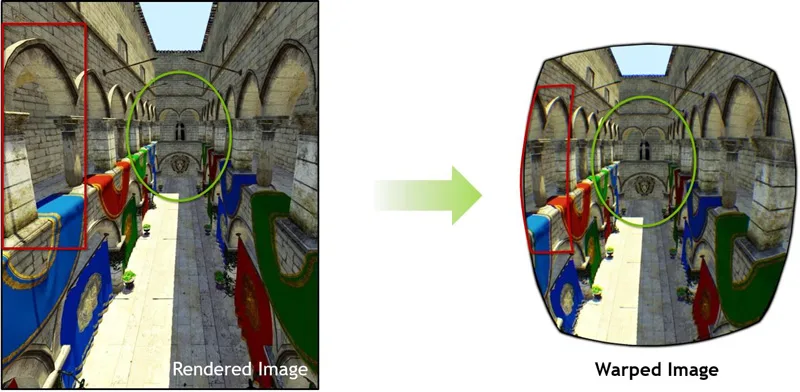
VR platforms typically use a two-step process that first renders a normal image (above left) and afterward uses a post-processing pass that warps the image to the HMD’s view (right).
Here is an example using the OpenVR benchmark, first with the Vive Pro. The Pro’s display resolution is 1440×1600 but the SteamVR render resolution is 2016×2240 and the average framerate is 79.56.

Next, using the OpenVR benchmark at the same settings, the G1’s display resolution is 2160×2160 but the SteamVR render resolution is 2196×2156 and the average framerate is 65.43 because of the difference in the compensation necessary to warp the image.
Finally, using the OpenVR benchmark at the same settings, the G2’s display resolution is 2160×2160 – the same as the G1 – but the SteamVR render resolution increases to 3168×3096 and the average framerate drops to 36.24 FPS because of the new lenses.
Here is just one game, Project CARS 2, benchmarked using a RTX 3090 comparing the frametime plot of the G1, the G2, and the Vive Pro at identical settings.
Here are the details as reported by FCAT-VR:
Using identical settings, the RTX 3090 delivers 135.8 unconstrained FPS with the Vive Pro, which drops to 113.47 FPS with the G1, and then way down to 80.87 FPS with the G2. The G2 requires either a more powerful video card to render a steady 90 FPS or lower settings.
We note that FCAT-VR appears to report synthetic frames as dropped – an issue that we encountered many months ago with the Vive Pro. We assume that the frames are synthesized rather than dropped because of our experience actually playing the games. Dropped frames are very noticeable, whereas synthetic frames produced by Motion Smoothing or reprojection are much more subtle and generally acceptable for many VR gamers.
VR needs to sustain a fixed framerate target locked to 90 FPS for many HMDs including the G1, the G2, and the Vive Pro. And if a PC can’t meet that target, the frame rate is halved to make sure that there is no judder causing motion sickness. 90Hz/90 FPS are the premium experience standard for Vive and HP Reverb HMDs. A game cannot exceed 90 FPS otherwise the player will see tearing in the HMD, and a game cannot drop below 90 FPS or the player will get VR sick. So it is crucial that framerates are locked to an exact cadence.
Let’s now compare the Vive Pro with the G2 using identical settings.
First up, Assetto Corsa Competizione.
Assetto Corsa Competizione
BTR’s sim/racing editor, Sean Kaldahl created the replay benchmark run that we use for both the pancake game and the VR game. It is run at night with 20 cars, lots of geometry, and the lighting effects of the headlights, tail lights, and everything around the track looks spectacular.
iRacing may be more accurate or realistic, but Assetto Corsa Competizione has some appeal because it feels more real than many other racing sims. It delivers the sensation of handling a highly-tuned racing machine driven to its edge. Unfortunately, it is probably the most demanding of the racing sims and it may not yet be well-optimized for VR.
Here are the details are reported by FCAT-VR:
The RTX 3090 delivered 162.04 unconstrained FPS with 5 dropped frames and 5 Warp misses, but it needed 45 synthetic frames using the Vive Pro.
Using the G2, it delivered 85.47 unconstrained FPS together with 1644 dropped (but probably) synthetic frames along with 24 Warp misses.
The racing experience is better on the Vive Pro and we would suggest dropping settings for the G2 to low to improve the experience. Because of its extra clarity, it still looks good on lowered settings.
Next, we look at Boneworks.
Boneworks
Boneworks is a rare game that couples a fair single player campaign with an incredible sandbox and next generation VR physics interactive tour de force. We benchmark using the ‘Time Tower’ level.
Boneworks made on the Unity engine has average to very good visuals and it particularly benefits by allowing for high levels of MSAA up to 8X which we use for benching. We also enable ambient occlusion and use the highest settings, and in addition, we set SteamVR’s resolution to 160%.
Here are the details as reported by FCAT-VR:
The RTX 3090 delivered 233.0 unconstrained FPS with 1 dropped frames and 1 Warp misses without synthetic frames using the Vive Pro.
Using the G2, the RTX 3090 delivered 126.877 unconstrained FPS together with 4 dropped (but probably) synthetic frames along with 2 Warp misses.
There isn’t any difference playing on either card at our settings although the image quality of the G2 is much higher than that of the Vive Pro. There really isn’t as much need for SuperSampling or increasing the resolution as it is with the Pro to gain additional image quality and clarity.
Let’s check out Elite Dangerous next.
Elite Dangerous
Elite Dangerous is a popular space sim built using the COBRA engine. It is hard to find a repeatable benchmark outside of the training missions.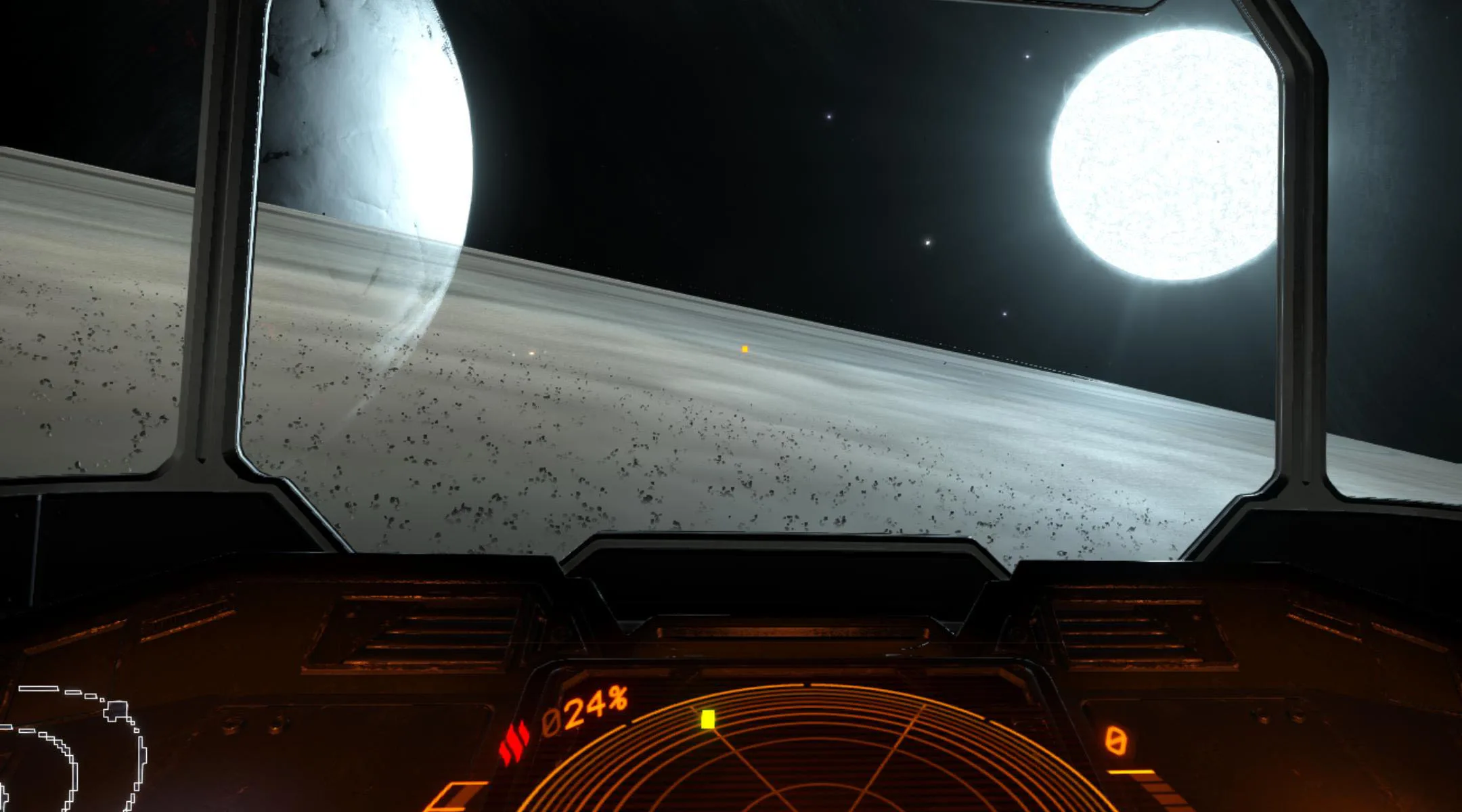
A player will probably spend a lot of time piloting his space cruiser while completing a multitude of tasks as well as visiting space stations and orbiting a multitude of different planets (~400 billion). Elite Dangerous is also co-op and multiplayer with a very dedicated following of players.
We picked the Ultra Preset, and this time, we set the Field of View to its maximum. Here are the frametimes.
Here are the details are reported by FCAT-VR:
The RTX 3090 delivered 168.48 unconstrained FPS with 1 dropped frame and a single Warp misses, plus 1 synthetic frame using the Vive Pro.
Using the G2, it delivered 94.07 unconstrained FPS together with 587 dropped (but probably) synthetic frames along with 2 Warp misses.
The experience playing Elite Dangerous at Ultra settings is acceptable using the G2 but we would rather drop a few individual settings rather than put up with any reprojection.
Let’s continue with Fallout 4.
Fallout 4
Fallout 4 uses the Creation Engine, and Bethesda has dropped all support for it so it remains unoptimized although there are mods that may be helpful. We benchmark at its highest settings and with TAA. All Fade settings are set to their maximums.
 Fallout 4 had some issues with both HMDs as it is still an unoptimized mess abandoned by its publisher – but it is playable and an amazing full-game experience.
Fallout 4 had some issues with both HMDs as it is still an unoptimized mess abandoned by its publisher – but it is playable and an amazing full-game experience.
Here is the frametime plot for Fallout 4.
Here are the details are reported by FCAT-VR:
The RTX 3090 delivered 180.83 unconstrained FPS with 3 dropped frames and 3 Warp misses, but it needed 159 synthetic frames using the Vive Pro.
Using the G2, it delivered 102.72 unconstrained FPS together with 212 dropped (but probably) synthetic frames along with 3 Warp misses.
The playing experience is almost identical using either HMD, but the image quality and detailing is far better on the G2 than the Vive Pro.
Next we look at Into the Radius.
Into the Radius
Into the Radius is a hardcore single player stealth survival adventure/exploration game, and it pays homage to the S.T.A.L.K.E.R. series by being set in the dangerous large open world of the Pechorsk Exclusion Zone.
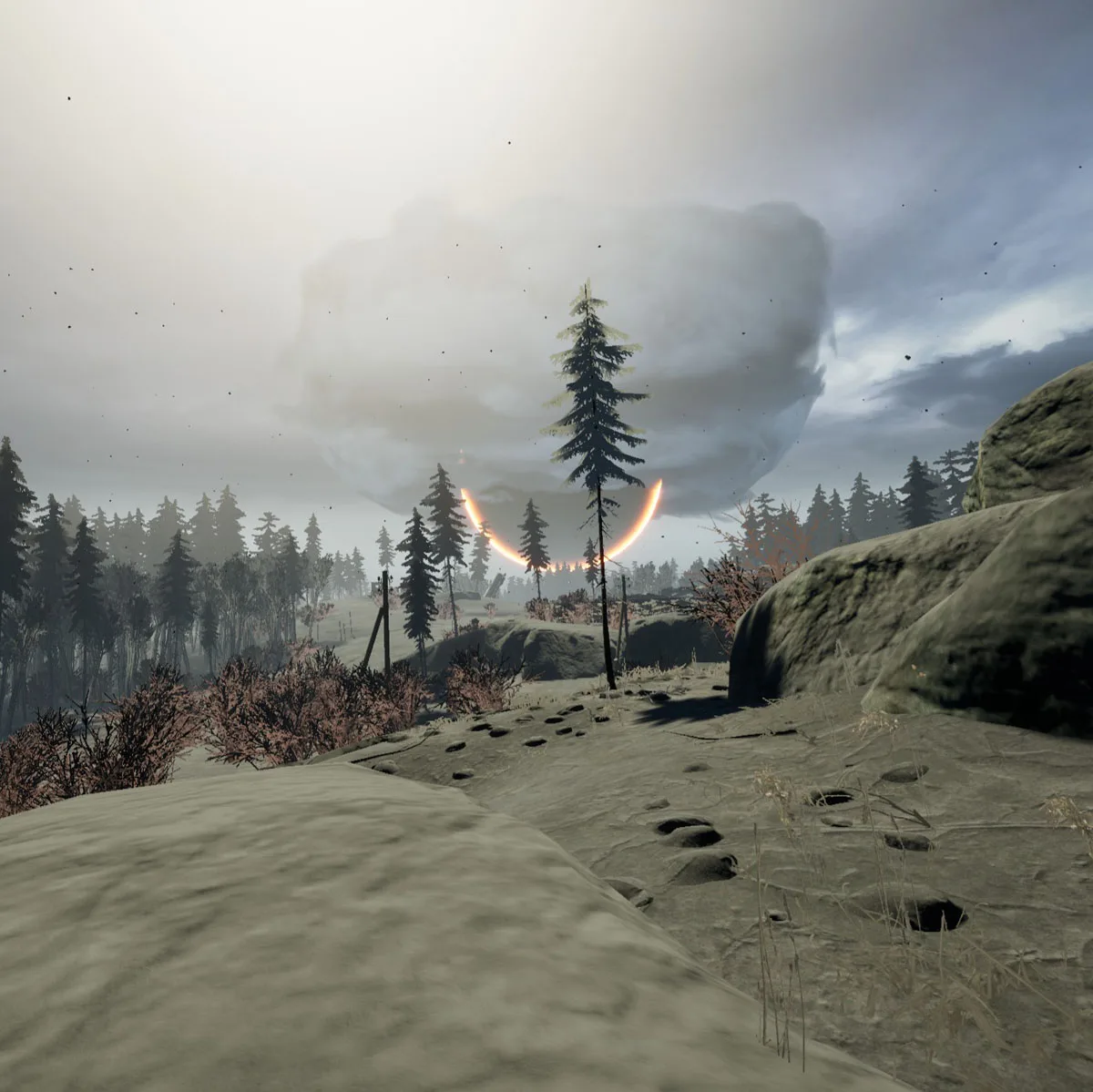 Into the Radius has good visuals using Unreal Engine 4 that really add to its spooky and intense atmosphere, and its performance demands on the video card are also higher since its a huge open world game with a decent draw distance.
Into the Radius has good visuals using Unreal Engine 4 that really add to its spooky and intense atmosphere, and its performance demands on the video card are also higher since its a huge open world game with a decent draw distance.
There are no user options for changing individual graphics settings other than High, Medium, and Low presets. There is also a slider to drop or subsample the resolution down to 65%, or to increase the resolution to 110%. We benchmarked our two HMDs at High Quality and with 110% resolution.
Here is the frametime plot for Into the Radius.
The RTX 3090 delivered 170.06 unconstrained FPS with 3 dropped frames and 3 Warp misses together with 5 synthetic frames using the Vive Pro.
Using the G2, the RTX 3090 delivered 105.41 unconstrained FPS together with 99 dropped (but probably) synthetic frames along with 8 Warp misses. Again, the delivered performance is almost identical on both HMDs, but the G2 has a much better IQ and overall clarity.
Next, we will check out another demanding VR game, No Man’s Sky.
No Man’s Sky
No Man’s Sky is an action-adventure survival single and multiplayer game that emphasizes survival, exploration, fighting, and trading. It is set in a procedurally generated deterministic open universe, which includes over 18 quintillion unique planets using its own custom game engine.
The player takes the role of a Traveller in an uncharted universe by starting on a random planet with a damaged spacecraft equipped with only a jetpack-equipped exosuit and a versatile multi-tool that can also be used for defense. The player is encouraged to find resources to repair his spacecraft allowing for intra- and inter-planetary travel, and to interact with other players.
Here is the No Man’s Sky Frametime plot. We set the settings to High which is above Enhanced but below Ultra, and we also set the anisotropic filtering to 16X and upgraded to FXAA+TAA.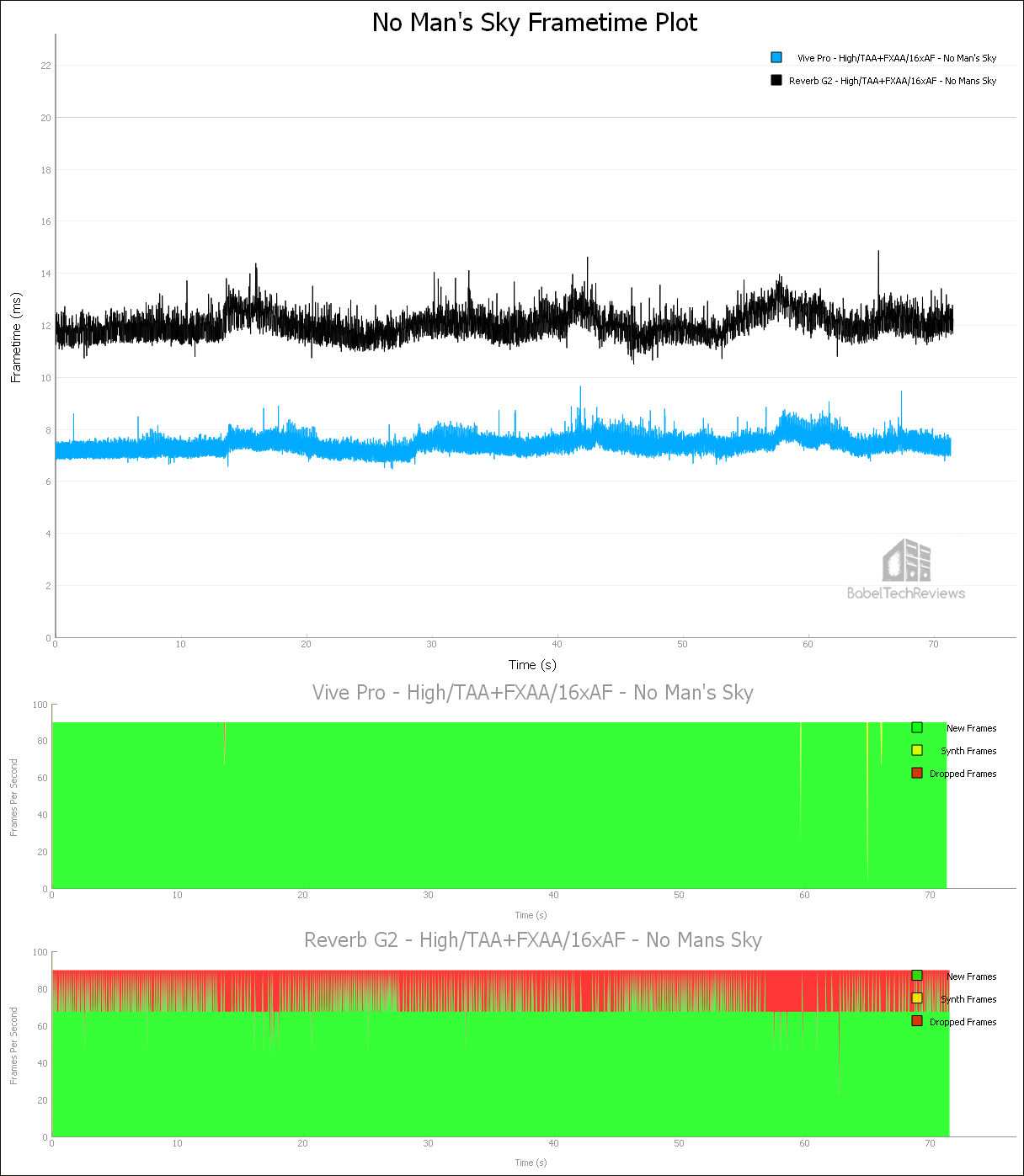
Here are the FCAT-VR details of our comparative runs.
The RTX 3090 delivered 135.10 unconstrained FPS with 1 dropped frames and 1 Warp miss, but it needed 13 synthetic frames using the Vive Pro.
Using the G2, it delivered 82.91 unconstrained FPS together with 1270 dropped (but probably) synthetic frames but with no Warp misses.
We would suggest dropping a few settings or set the overall quality to ‘Enhanced’ so the RTX 3090 can deliver a constant 90 FPS to the G2. It has a superior image even with lowered settings.
Next, we will check out another VR game, Obduction.
Obduction
Obduction is considered to be the spiritual successor to Myst and Riven. It is an adventure game developed by Cyan Worlds using the Unreal 4 engine and it has very good visuals. There is an emphasis on puzzle solving which get more and more difficult as a player progresses.
Here is Obduction’s frametime plot.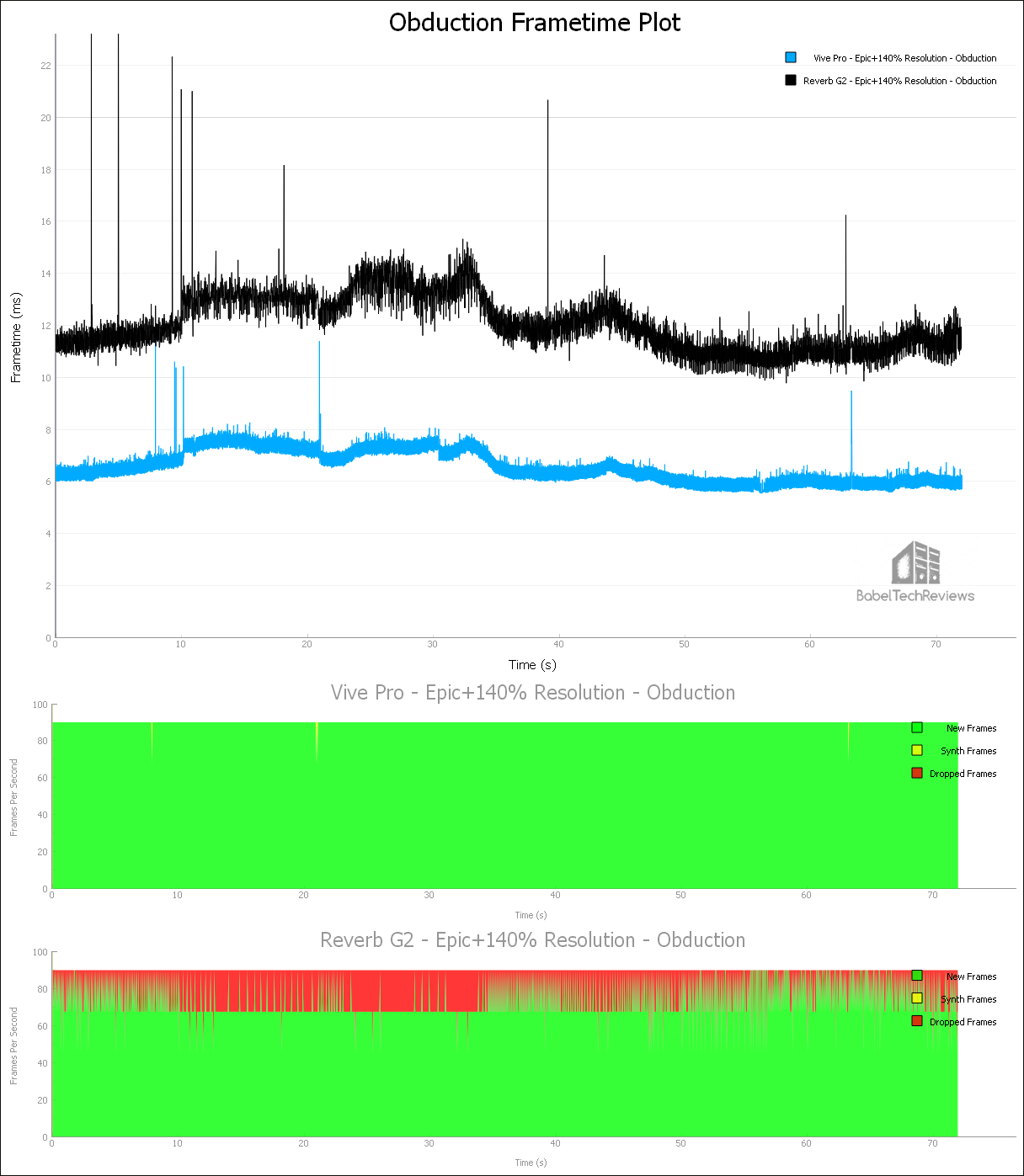
Here are the details.The Red Devil RX 6900 XT delivered 126.2 unconstrained FPS with no dropped frames or warp misses, but with 20 synthetic frames.
The RTX 3090 delivered 153.4 unconstrained FPS with no dropped frames or Warp misses, but it needed 4 synthetic frames using the Vive Pro.
Using the G2, it delivered 83.02 unconstrained FPS together with 1256 dropped (but probably) synthetic frames. Even with the in-game resolution set to 140% on the Pro and to 100% on the G2, the G2 still looks superior in every way. SuperSampling, Super Resolution, and increased pixel density are not necessary on the G1 and the results are far less dramatic than using it on the Pro.
Next we check out BTR’s newest game, Pavlov.
Pavlov
There is a real sense of immersion that comes from playing Pavlov in VR. Pavlov is the most popular multiplayer shooter in VR with a primary focus on its community. Realistic fast-paced combat is a large part of its core experience, and even tanks have been added to make it into a great shooter.

We used the training sessions with the highest settings.
The RTX 3090 delivered 361.29 unconstrained FPS with 5 dropped frames and 5 Warp misses and it needed 5 synthetic frames using the Vive Pro.
Using the G2, it delivered 214.01 unconstrained FPS together with 16 dropped (but probably) synthetic frames but with 8 Warp misses. There is no difference in performance using either HMD, and the G2 again takes the image quality crown
Next we will check out another demanding VR game, Project CARS 2 that we like better than its successor.
Project CARS 2
There is a real sense immersion that comes from playing Project CARS 2 in VR using a wheel and pedals. It uses its in-house Madness engine, and the physics implementation is outstanding. We are disappointed with Project CARS 3, and will continue to use the older game instead for VR benching.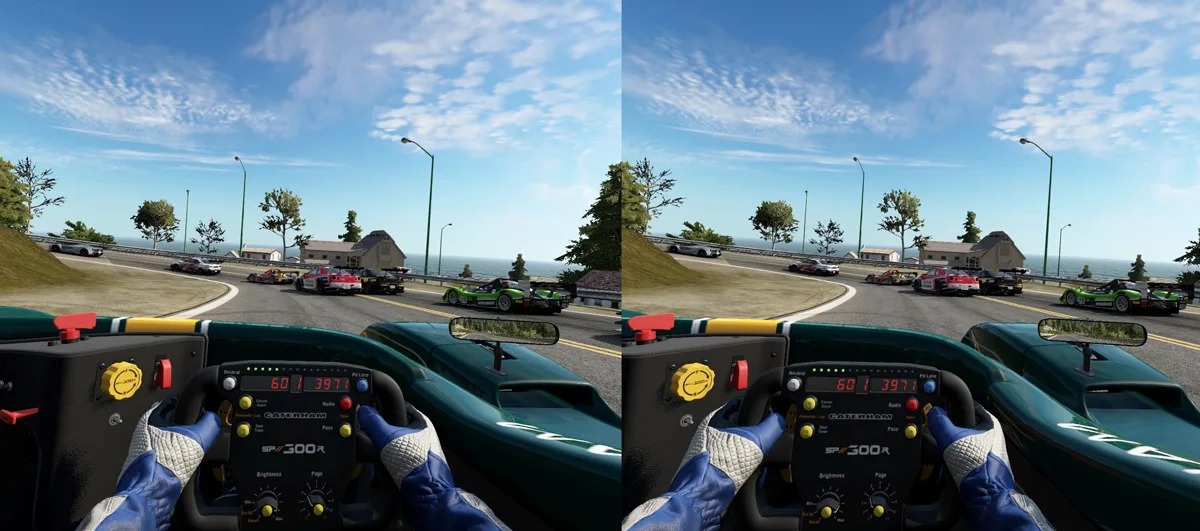
Project CARS 2 offers many performance options and settings and we prefer playing with SMAA Ultra.
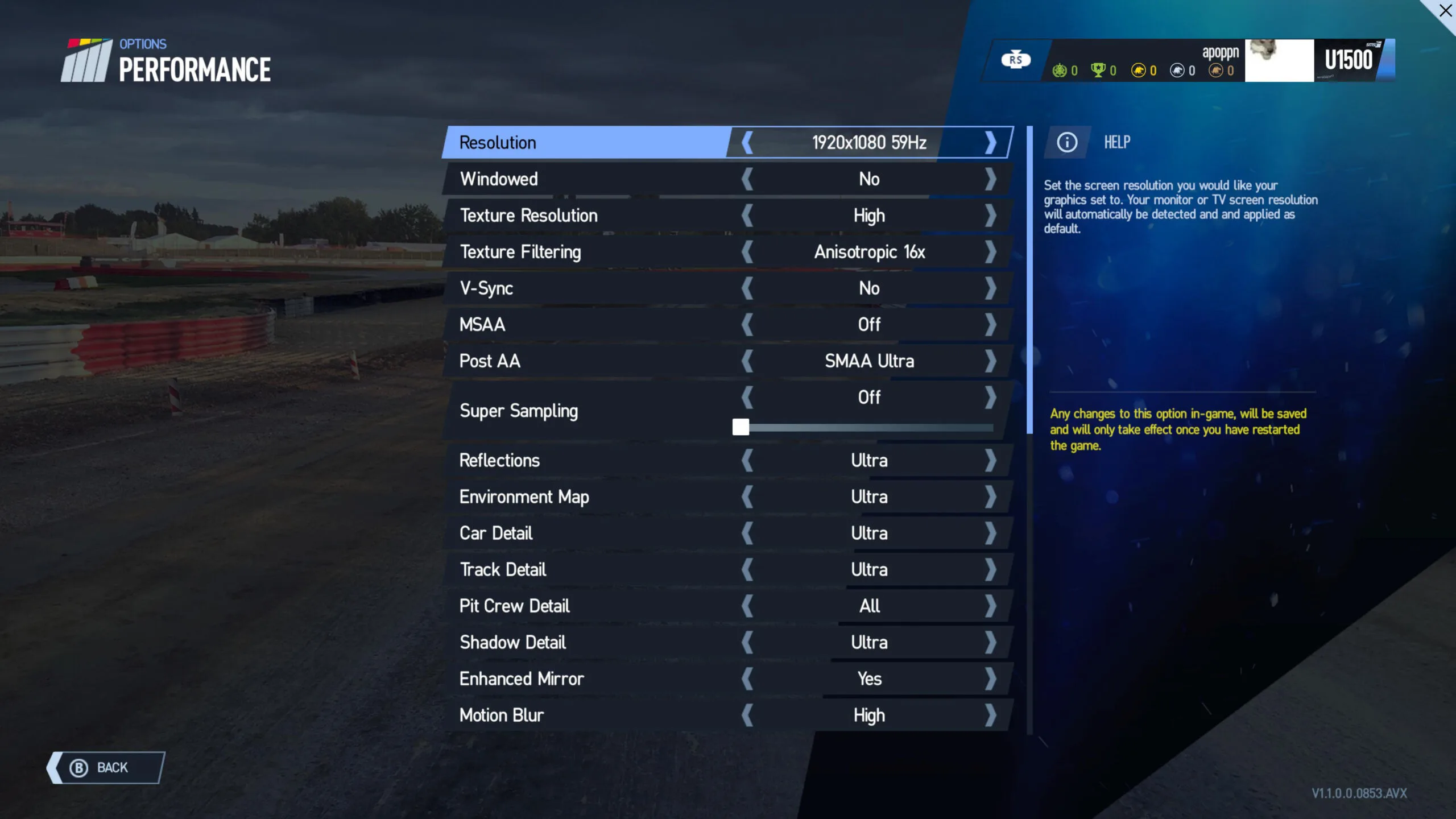
We used maximum settings including for Motion Blur although it looks best to us with on Low or Medium. If necessary, we would also recommend lowering grass and reflections to maximize framerate delivery as motion smoothing or reprojection tends to cause visible artifacting.
Here is the frametime plot where this time we .
The RTX 3090 delivered 136.07 unconstrained FPS with 2 dropped frames and 2 Warp misses, and it only needed 2 synthetic frames using the Vive Pro.
Using the G2, the RTX 3090 delivered 75.37 unconstrained FPS together with 1915 dropped (but probably) synthetic frames but with no Warp misses. Lower the settings on the G2 to avoid any motion smoothing or reprojection and it will still look better than on the Vive Pro. We are convinced that the G2 is the best HMD for racing and flying sims.
Let’s benchmark Skyrim VR.
Skyrim VR
Skyrim VR is an older game that is no longer supported by Bethesda, but fortunately the modding community has adopted it. It is not as demanding as many of the newer VR ports so its performance is still very good on maxed-out settings using its Creation engine.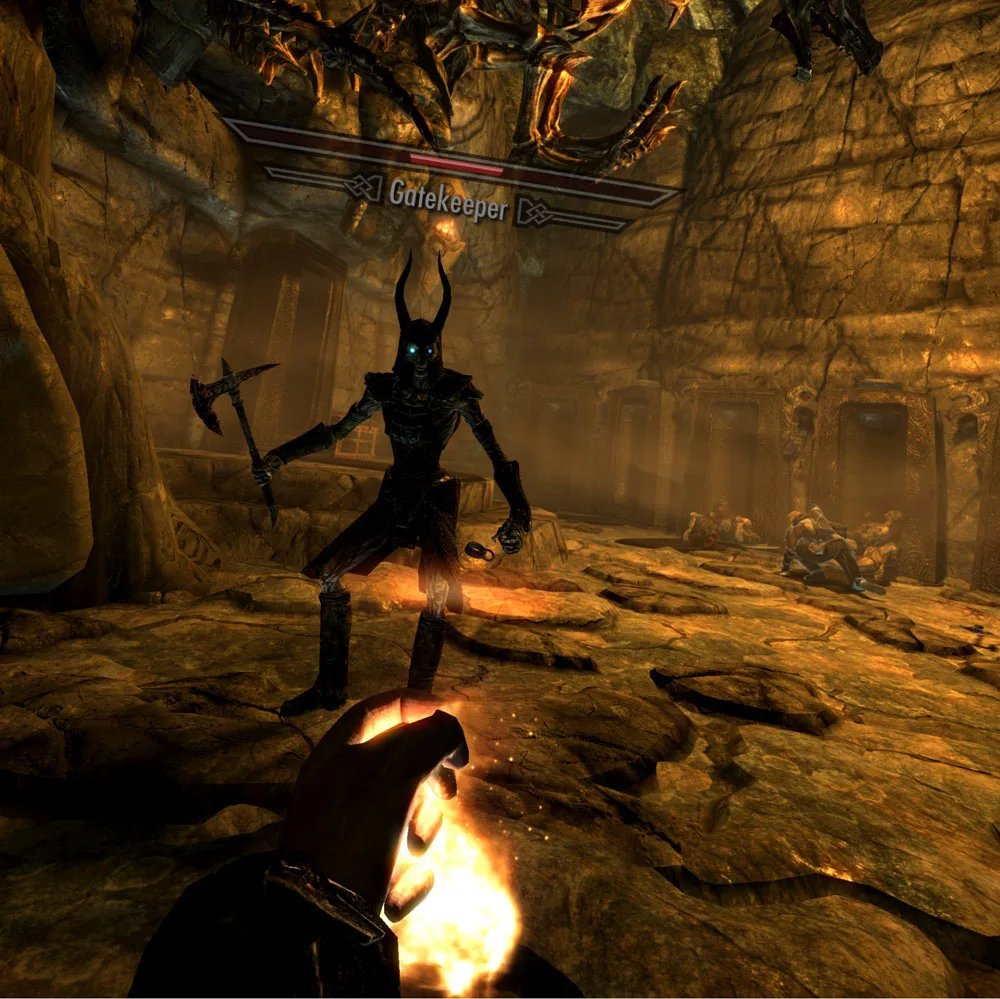
We benchmarked Skyrim VR using its highest settings, and we also increased the resolution to its in-game maximum.
Here are the frametime results.
Here are the details of our comparative runs as reported by FCAT-VR.
The RTX 3090 delivered 190.70 unconstrained FPS with 7 dropped frames and 7 Warp misses, but it still needed 6 synthetic frames using the Vive Pro.
Using the G2, the RTX 3090 delivered 125.79 unconstrained FPS together with 58 dropped (but probably) synthetic frames but with 2 Warp misses.
The performance is identical on both HMDs with the G2 providing the most clarity while taking full advantage of the long draw distances that the game offers. If you plan to mod the game, just lower the in-game SuperSampling to 100% and mod away.
Let’s check out Subnautica next.
Subnautica
Subnautica uses the Unity engine. As the sole survivor of a crash landing, the player ventures into the depths of a visually impressive alien underwater world. Here you can explore, craft equipment and build bases, pilot underwater craft, and solve mysteries all while attempting to survive a hostile environment. It is an unoptimized mess, but the VR experience is well worth it.
We benchmarked Subnautica using its highest settings plus TAA, but we left its resolution at 100%, and here are the frametime results.
The RTX 3090 delivered 139.35 unconstrained FPS with 4 dropped frames and 4 Warp misses, but it needed 1948 synthetic frames using the Vive Pro.
Using the G2, the RTX 3090 delivered 63.06 unconstrained FPS together with 2327 dropped (but probably) synthetic frames but with no Warp misses.
The experience playing Subnautica using its highest settings isn’t great as it doesn’t appear to be very well optimized and there are obvious stutters at times. The performance surprisingly is almost the same between our two competing HMDs, but again the G2 wins hands down when comparing image quality and clarity.
Next up, The Vanishing of Ethan Carter.
The Vanishing of Ethan Carter
The Vanishing of Ethan Carter is an older game which is built on the Unreal 4 engine and it still boasts amazing visuals although it is not demanding. Although it is considered by some to be a walking simulator, it is also an excellent detective game with great puzzles. But be aware that its style of locomotion tends to make some of its players VR sick.
There are just a few in-game graphics options available, so we set 100% resolution in-game with TAA and then set SteamVR’s resolution to 200%.
The RTX 3090 delivered 290.17 unconstrained FPS with 2 dropped frames, 2 Warp misses, and 2 synthetic frames using the Vive Pro.
Using the G2, it delivered 95.79 unconstrained FPS together with 843 dropped (but probably) synthetic frames and with 2 Warp misses.
We can see that extreme SuperSampling or super resolution puts a huge strain on the RTX 3090 when using the G2. It makes no sense whatsoever (other than benchmarking to prove a point) to increase the G2’s resolution to 200% since it looks better at 100% than the Vive Pro does at 200% or even higher. There is a diminishing return visually for SuperSampling after about 130% even with the Vive Pro and it is not at all necessary for the G2.
Last up, The Walking Dead: Saints & Sinners.
The Walking Dead: Saints & Sinners
The Walking Dead: Saints & Sinner is the last of BTR’s 13 VR game benching suite. It is a first person survival horror adventure RPG with a strong emphasis on crafting. Its visuals using the Unreal 4 engine are outstanding and it makes good use of physics for interactions.
We benchmarked Saints and Sinners using its highest settings, but we increased the Pixel Density to its maximum 150% in game. 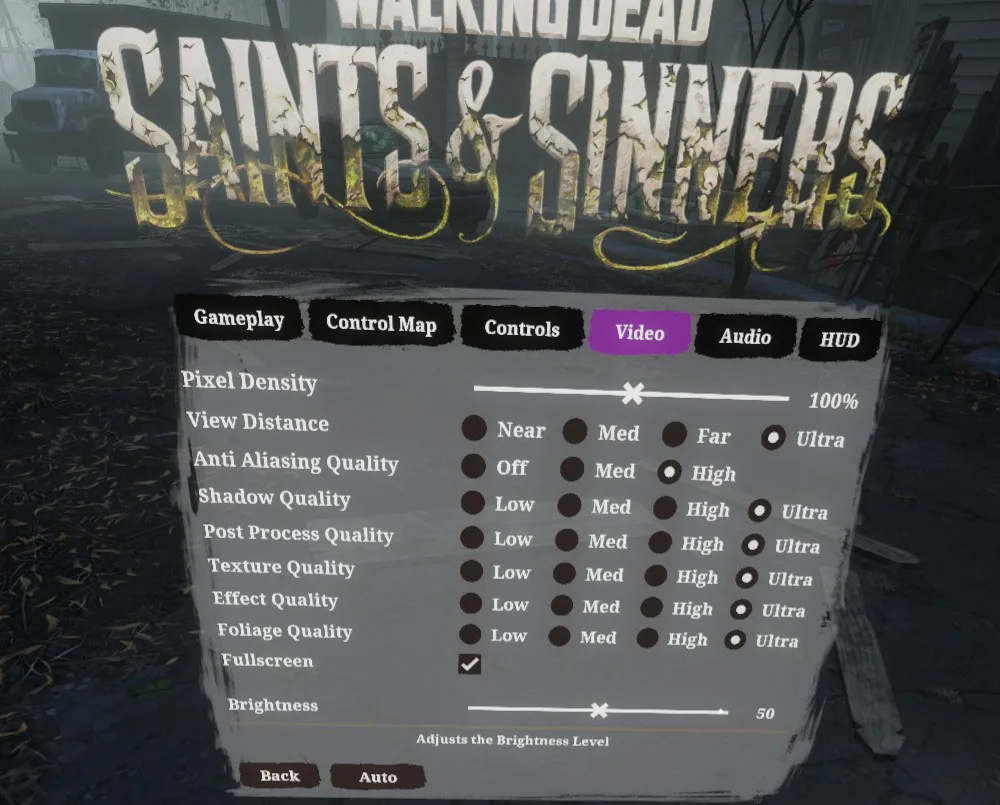 Here is the frametime chart.
Here is the frametime chart.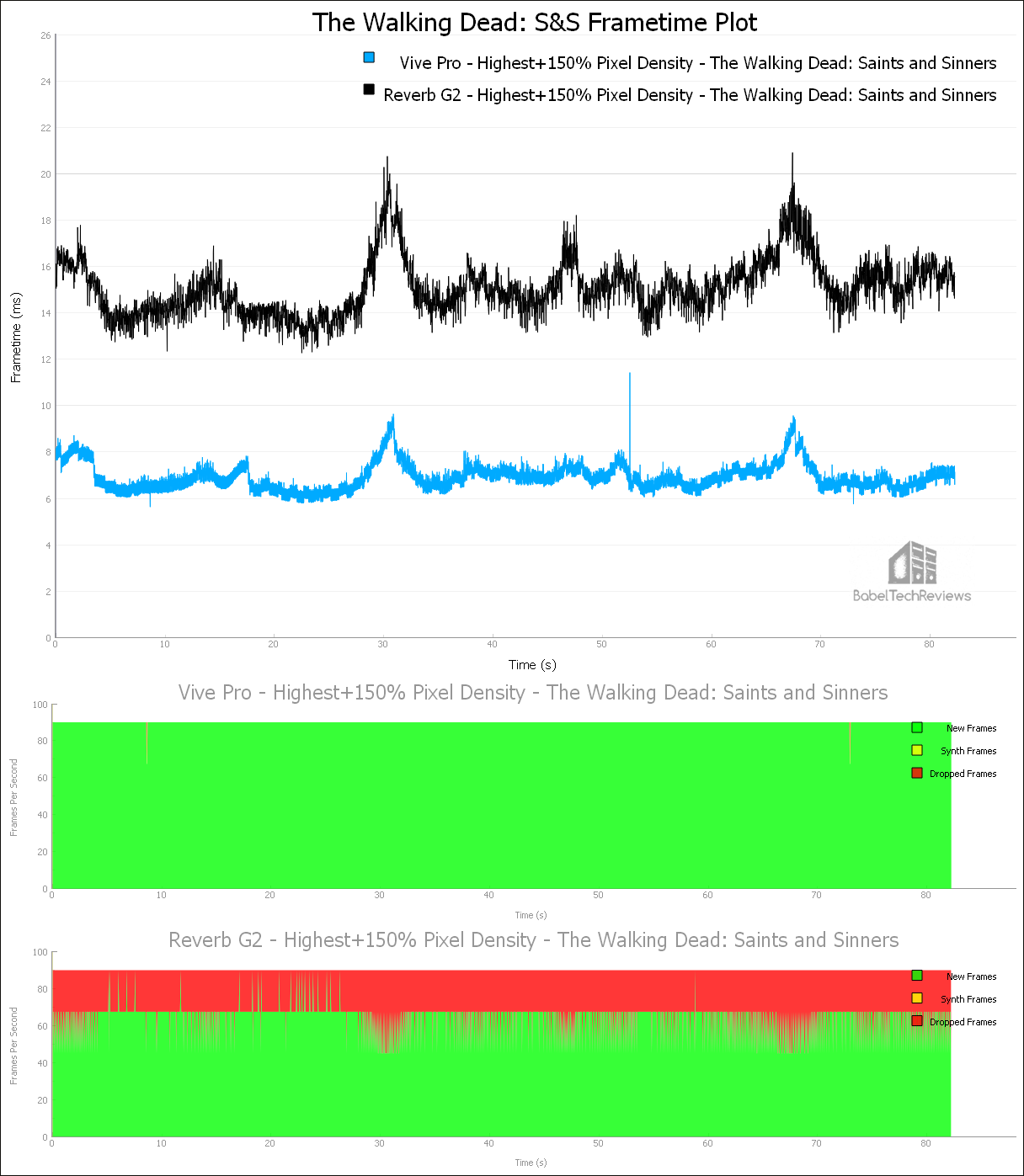
Here are the details as reported by FCAT-VR. 
The RTX 3090 delivered 145.14 unconstrained FPS with 2 dropped frames, 2 Warp misses, and 2 synthetic frames using the Vive Pro.
Using the G2, it delivered 66.67 unconstrained FPS together with 2211 dropped (but probably) synthetic frames and with 11 Warp misses.
Again, there is no reason – outside of benchmarking to prove a point – to increase the pixel density to 150% for the G2. The visuals simply do not benefit as much from it as much as the Vive Pro does. At 100% pixel density, the image quality, clarity, and overall visuals are far superior to the Pro’s at 150%.
Unconstrained Framerates
Here are our thirteen test games and one synthetic bench, the OpenVR benchmark. Higher is better. We don’t give percentages of change or percentages of increase between the two competing HMDs since unconstrained framerates are just one metric of performance headroom that is useless without the accompanying frametime charts.
The Reverb G2 is a significantly more demanding HMD than the Vive Pro yet our RTX 3090 can deliver above 90 FPS to seven of thirteen games that we tested at maxed-out settings. And for three of these games, we used ridiculous and unnecessary amounts of SuperSampling/Super Resolution/increased pixel density for the G2 for other than comparison purposes. The G2 at 100% resolution generally offers much clearer and overall better visuals than the Vive Pro at 200% resolution.
Let’s check out our conclusion.
The “Best” HMD
There is no such thing as the “best” HMD unless you are just talking about specs, in which case, the G2 wins by virtue of its higher resolution. However, VR is more “alive” and immersive using the G2 over the Vive Pro for this reviewer. What is especially impressive is that the Reverb G2 at $599 is significantly less expensive than the Vive Pro headset by itself which also requires expensive controllers and base stations. The G2 setup is also less complex and time-consuming. The only advantages that the Pro has over the G2 is with its more precise tracking, darker blacks by reason of using an OLED screen, and it’s ability to use wireless for a completely untethered experience.
If you are a racing or flight sim enthusiast, the choice is clear – the G2 is a far superior HMD to the Pro. However, for action games and especially standing games or shooters where precise tracking is critical, the Pro may be a better choice. However, there is another option that we are going to explore in our G2 follow-up review – hybrid Mixed Reality – pairing the Index controllers and the Base stations for perfect tracking with the clearest and highest resolution HMD, the G2, for a sort of “ultimate” VR system.

We want to extend our thanks to HP for loaning us a G2, and we loved testing and evaluating their wonderful hardware. We give the Reverb G2 an enthusiast recommendation – especially for simmers. We like it so much that we are going to buy a Reverb G2 for our own enjoyment, and we will pair it with SteamVR base stations and Index controllers for the best of all VR gaming.
We will continue to benchmark the G2 and will also follow-up this review with practical “best playable settings” that will deliver at least a constant 90 FPS from lesser video cards than the RTX 3090 and we will continue to add more games for benching comparisons. 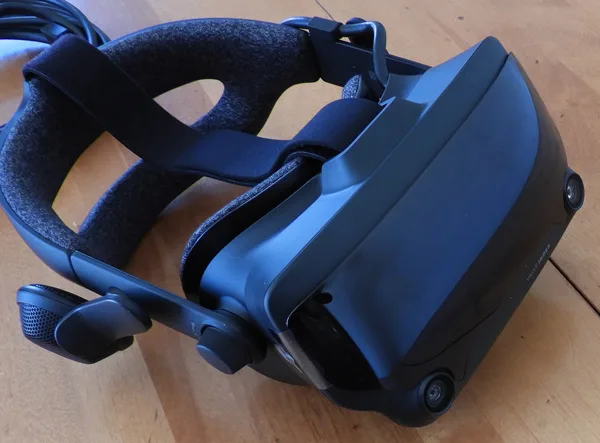
Next up in our VR HMD series, we are going to compare the performance of the Valve Index with the Vive Pro and the G2. In addition, we plan to review ALTDEUS: Beyond Chronos before it releases on February 19 using our 3 HMDs.
Happy VR Gaming!
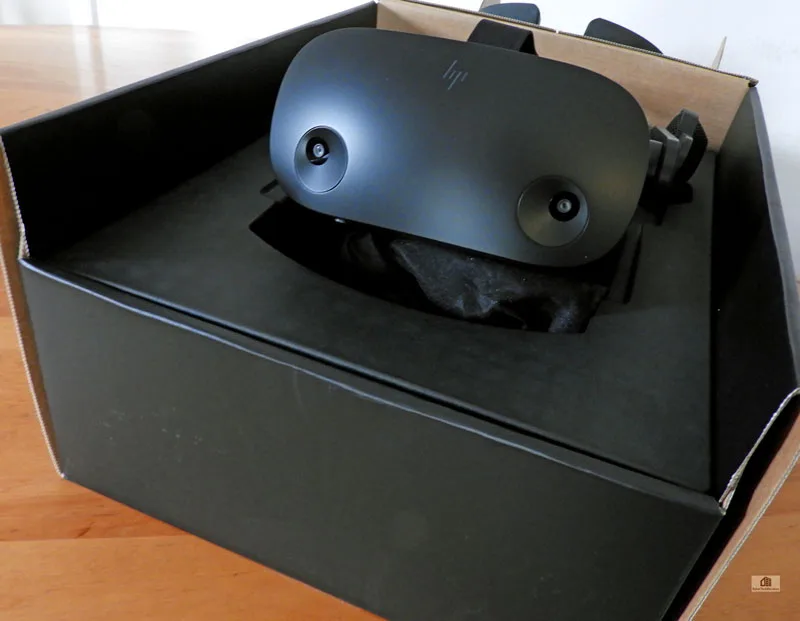
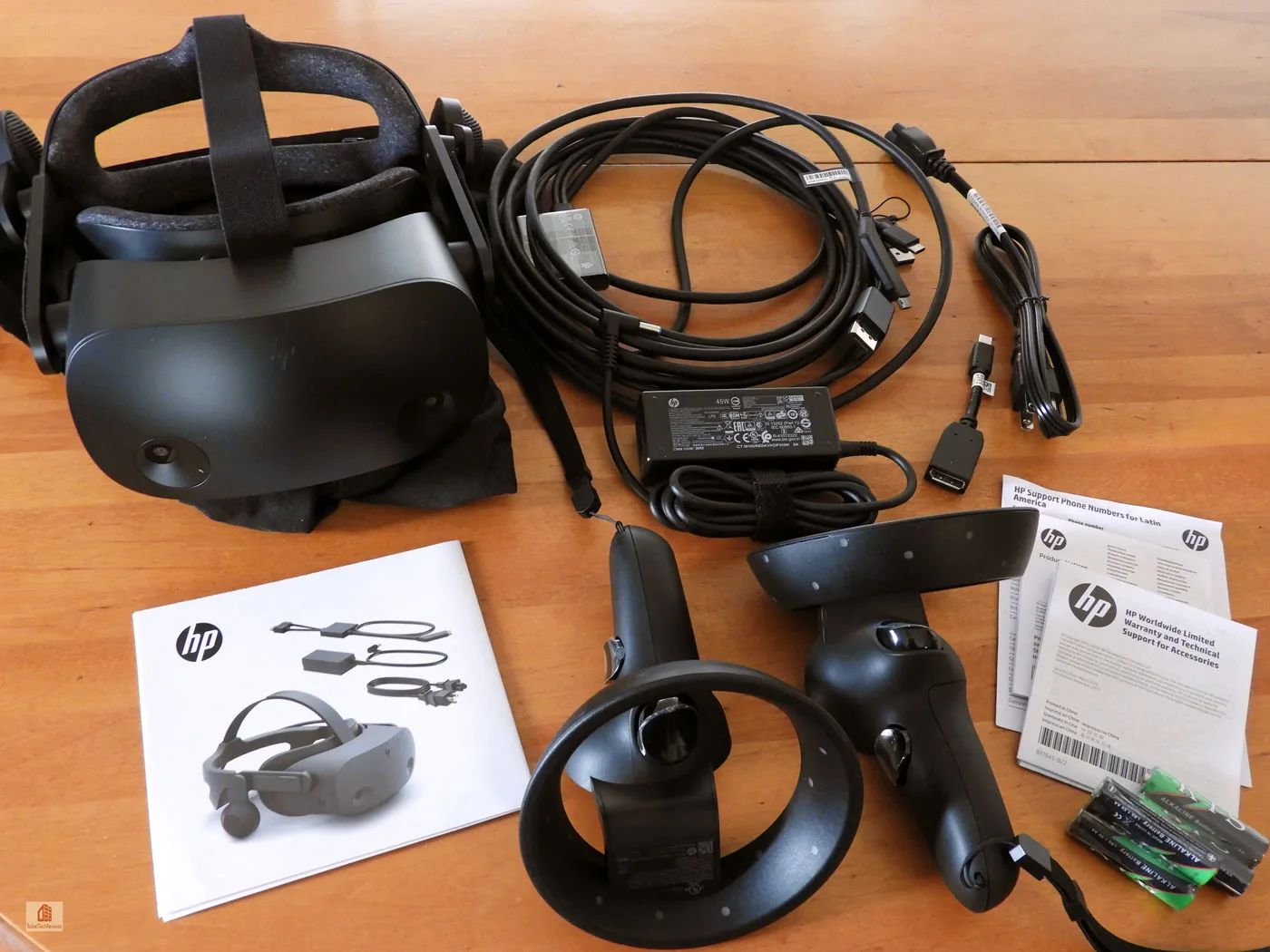
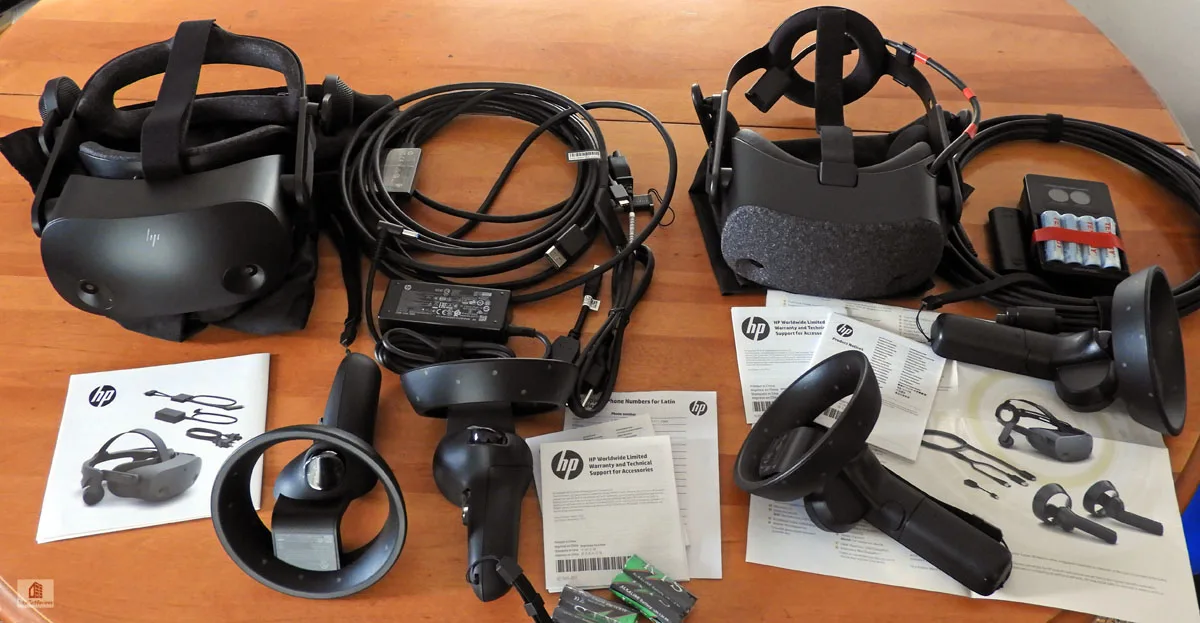
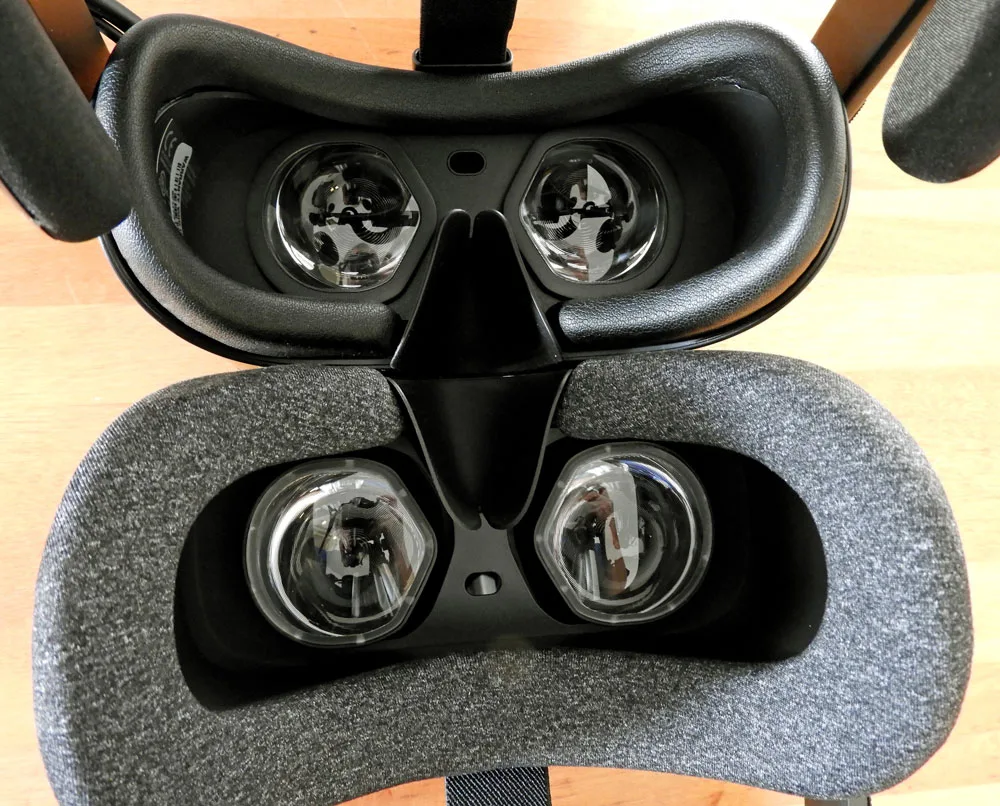


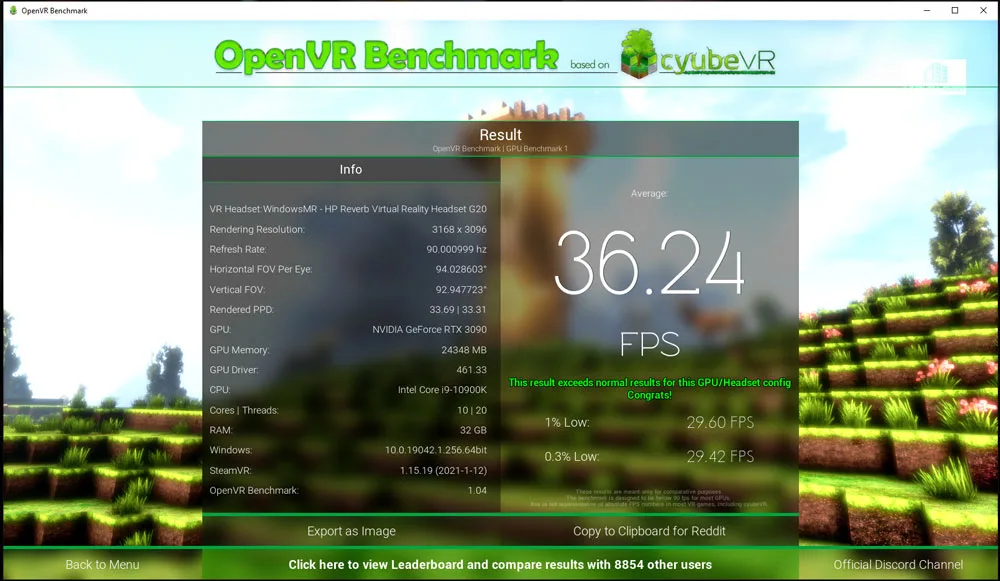
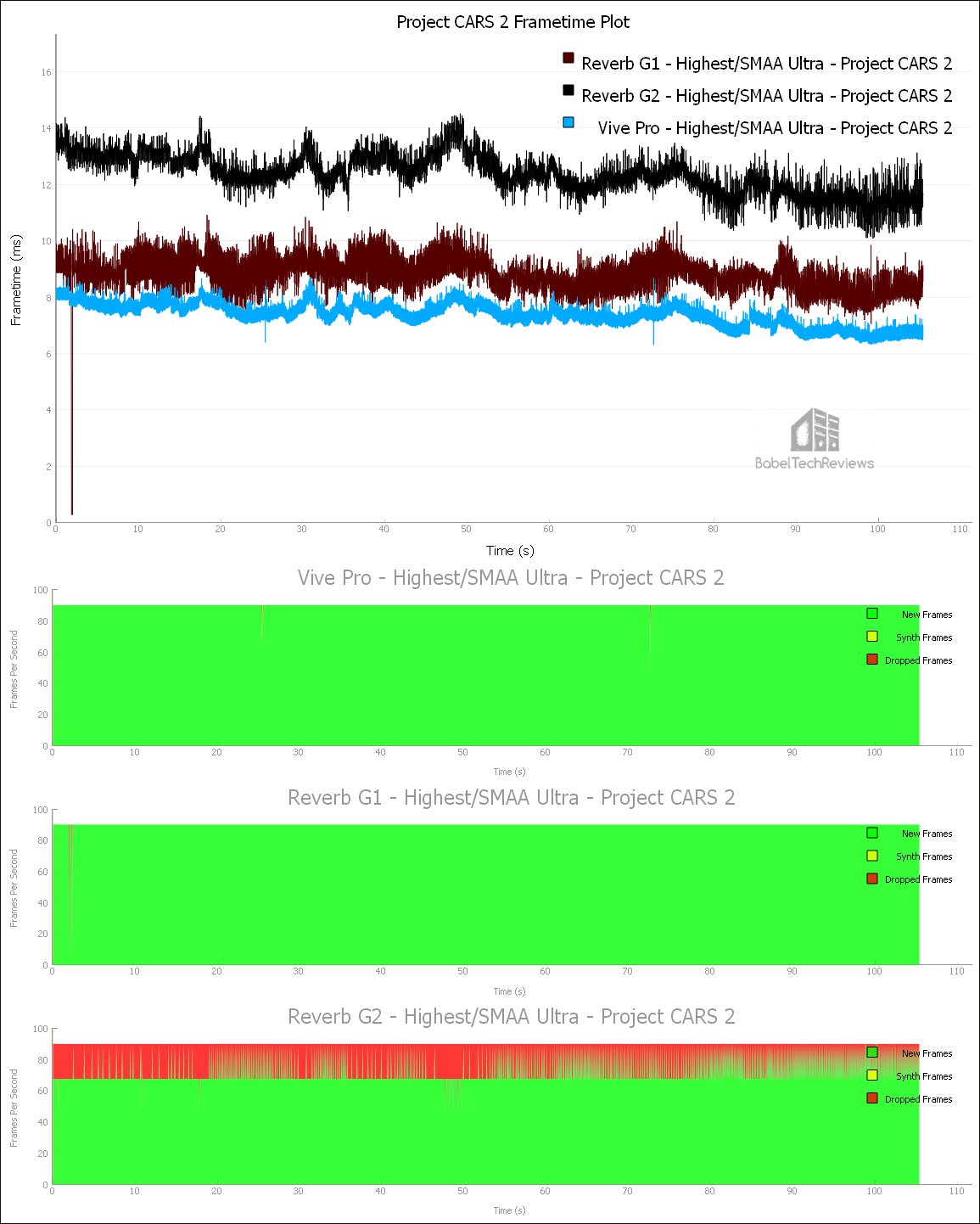
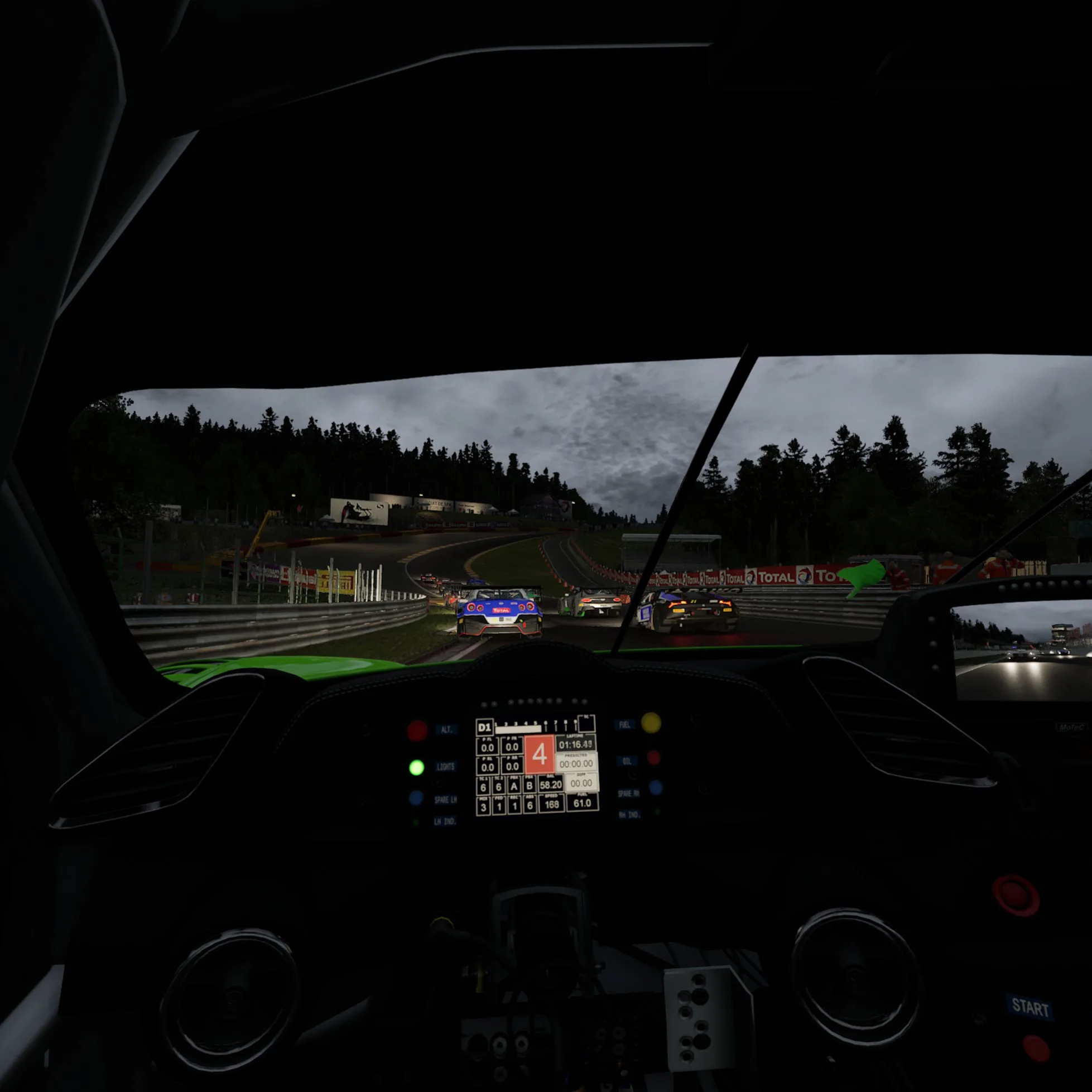


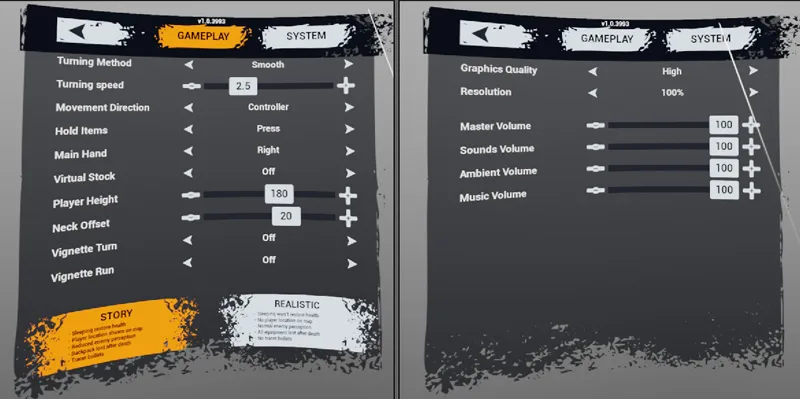










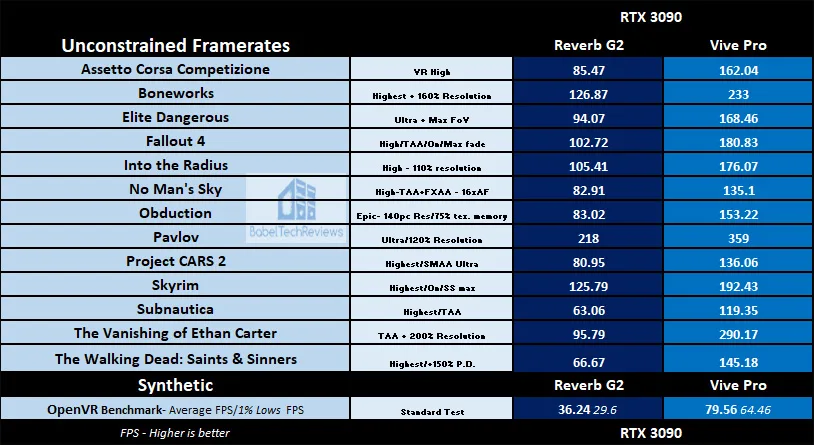
Comments are closed.